Inbox and Environment News: Issue 474
November 15 - 21, 2020: Issue 474
Parra'dowee Time
November-December
Goray'murrai—Warm and wet, do not camp near rivers
This season begins with the Great Eel Spirit calling his children to him, and the eels which are ready to mate make their way down the rivers and creeks to the ocean.
It is the time of the blooming of the Kai'arrewan (Acacia binervia) which announces the occurrence of fish in the bays and estuaries.
Acacia binervia, commonly known as the coast myall, is a wattle native to New South Wales and Victoria.
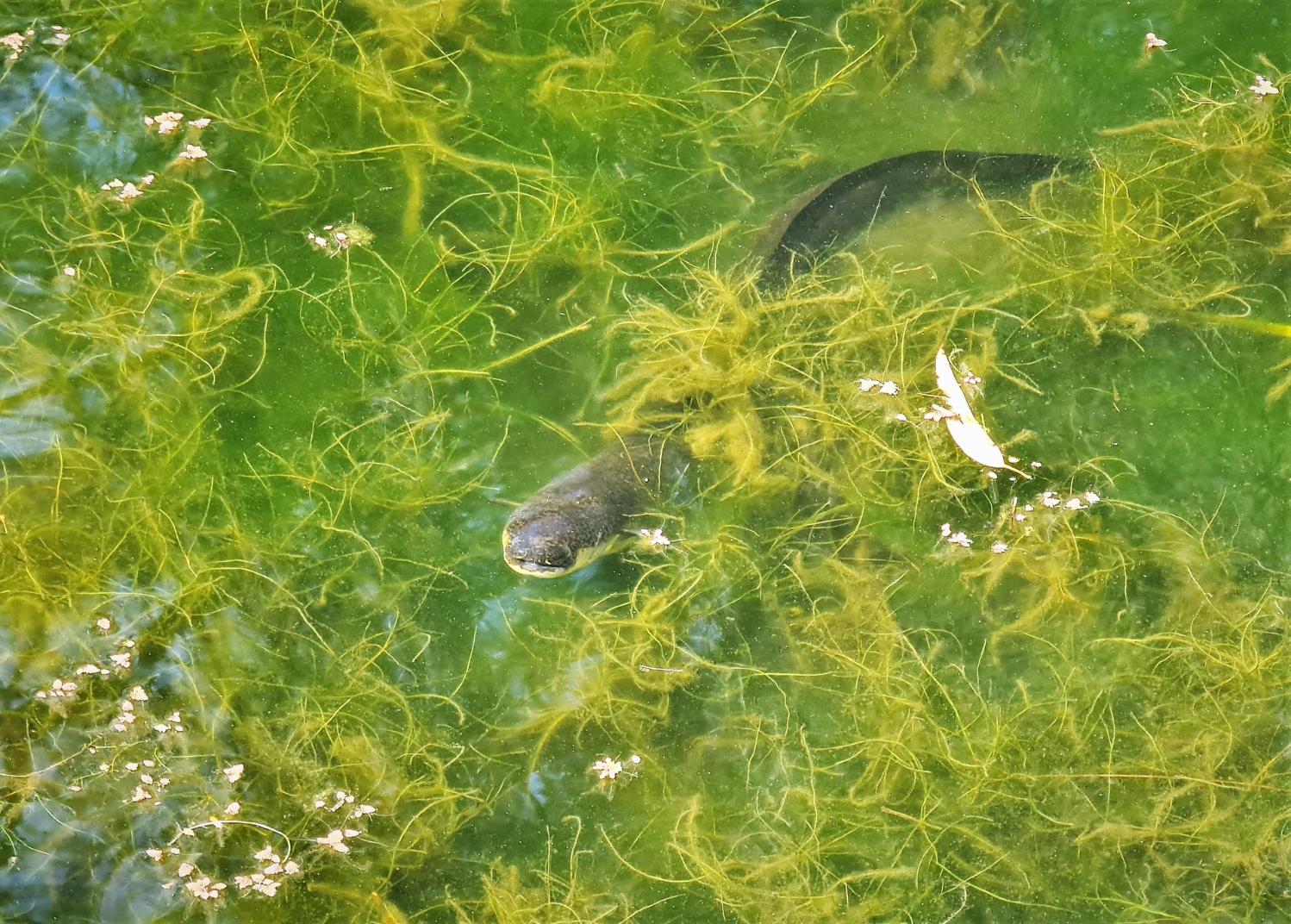
Watch Out On The Pittwater Estuary Water Zones & Beaches: Seals Are About
Residents have filmed and photographed the seals living at Barrenjoey as far south as Rowland Reserve and over at Clareville beach in recent days and ask that people keep an eye out for them and ensure they are kept safe from boat strikes and dogs are kept off the beaches they're not supposed to be on.
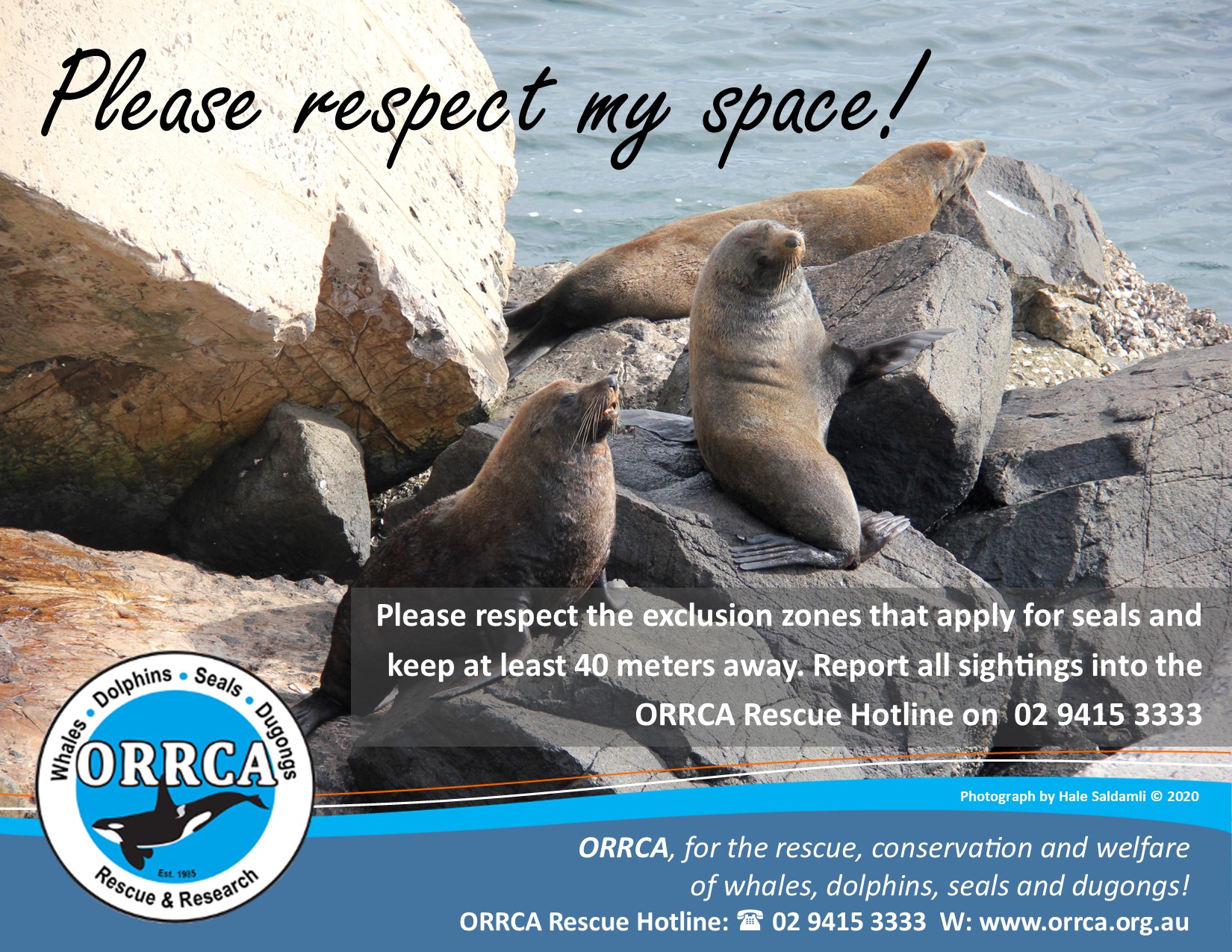
The Coast
Radio Northern Beaches
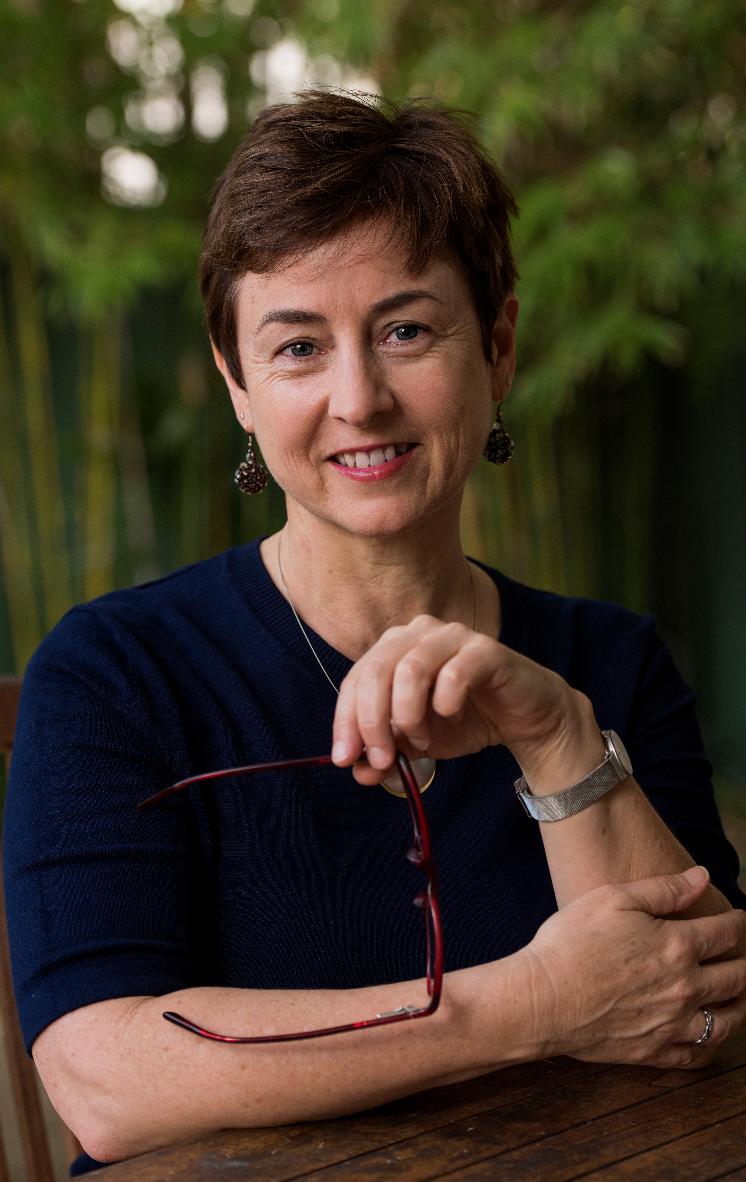
Can You Help Restore Our Environment? R&R Grants Open
Bushcare In Pittwater
Where we work Which day What time
Avalon
Angophora Reserve 3rd Sunday 8:30 - 11:30am
Avalon Dunes 1st Sunday 8:30 - 11:30am
Avalon Golf Course 2nd Wednesday 3 - 5:30pm
Careel Creek 4th Saturday 8:30 - 11:30am
Toongari Reserve 3rd Saturday 9 - 12noon (8 - 11am in summer)
Bangalley Headland 2nd Sunday 9 to 12noon
Bayview
Winnererremy Bay 4th Sunday 9 to 12noon
Bilgola
North Bilgola Beach 3rd Monday 9 - 12noon
Algona Reserve 1st Saturday 9 - 12noon
Plateau Park 1st Friday 8:30 - 11:30am
Church Point
Browns Bay Reserve 1st Tuesday 9 - 12noon
McCarrs Creek Reserve Contact Bushcare Officer To be confirmed
Clareville
Old Wharf Reserve 3rd Saturday 8 - 11am
Elanora
Kundibah Reserve 4th Sunday 8:30 - 11:30am
 Mona Vale
Mona Vale Mona Vale Beach Basin 1st Saturday 8 - 11am
Mona Vale Dunes 2nd Saturday +3rd Thursday 8:30 - 11:30am
Newport
Bungan Beach 4th Sunday 9 - 12noon
Crescent Reserve 3rd Sunday 9 - 12noon
North Newport Beach 4th Saturday 8:30 - 11:30am
Porter Reserve 2nd Saturday 8 - 11am
North Narrabeen
Irrawong Reserve 2nd Saturday 2 - 5pm
Palm Beach
North Palm Beach Dunes 3rd Saturday 9 - 12noon
Scotland Island
Catherine Park 2nd Sunday 10 - 12:30pm
Elizabeth Park 1st Saturday 9 - 12noon
Pathilda Reserve 3rd Saturday 9 - 12noon
Warriewood
Warriewood Wetlands 1st Sunday 8:30 - 11:30am
Whale Beach
Norma Park 1st Friday 9 - 12noon
Western Foreshores
Coopers Point, Elvina Bay 2nd Sunday 10 - 1pm
Rocky Point, Elvina Bay 1st Monday 9 - 12noon
Gardens And Environment Groups And Organisations In Pittwater
Inaugural Australian Institute Of Marine Science Medal 2020 Awarded
November 11, 2020
Passion and collegiate contribution to marine science underpin inaugural awarding of AIMS Medal
A passion for marine biology, recognition of the contribution of colleagues and enduring contribution to excellence has seen marine biologist, Dr Andrew Heyward, awarded the inaugural Australian Institute of Marine Science Medal.
Pioneering the establishment of AIMS in Western Australia almost two decades ago, Dr Heyward was presented with the medal by AIMS’ Research Program Leader in Perth, Dr Karen Miller.
The AIMS Medal will be awarded every two years in recognition of outstanding and enduring contribution to AIMS’s mission, commitment to sustained excellence, and exemplification of AIMS values.
AIMS CEO Dr Paul Hardisty, speaking via video link from Townsville, said Dr Heyward was selected by a panel of his science peers from a list of highly credentialled colleagues. The panel singled out his selflessness and considered leadership which made a real difference to AIMS and enhanced the value of the science that AIMS delivers to the nation.
“Andrew is a visionary science leader. More than a decade ago his pioneering published work on reef restoration and larval survival set the stage for our current major effort on the Reef Restoration and Adaption Program.
“As AIMS’s work with industry grew, in no small way because of his efforts, Andrew led the enhancement of AIMS's safety performance and record into a new era of much stronger safety values and performance.
“He was responsible for building relationships that endure over decades, as well as leading the development of key partnerships with the oil and gas industry which led to dozens of projects and a huge science impact, and established AIMS in the west as a viable long-term operation.”
Dr Heyward described his work as a passion and a pleasure and paid tribute to his colleagues.
“The award reflects an ongoing contribution to our values and our mission and you cannot do that on your own. Every time the best achievements that I have been involved in have been dependent on everyone else at AIMS.
“The Australian Institute of Marine Science has a really worthy mission and has fantastic values, so what’s not to love,” he said.
Dr Hardisty said that Dr Heyward’s attitude, willingness to help, and positive outlook touched all who were lucky enough to work with him and that he could not think of a more deserving winner.
Dr Heyward completed his studies at James Cook University in Queensland, after which he held positions in Japan, Victoria and South Australia. He joined AIMS in 1994 as Scientist in Charge and established its first WA office in Dampier. Around 2001 both the AIMS office and Andrew relocated to Perth.
His current research is focused on exploratory surveys of coastal and offshore habitats in north-west Australia and studies of coral biology related to early life histories. The work is revealing the globally significant diversity of benthic marine habitats in the north-west and Timor Sea. Added to this is reef restoration research which is exploring new ways to assess coral recruitment and enhance post-settlement survival.
“Being custodians of our planet is more important than ever and marine sciences can make a good contribution to the care of the oceans and our future,” he said.
Wild Idea Incubator 2021: Do You Have A Great Idea?
- Majell Backhausen, Simon Harris and Hilary McAllister: For Wild Places
- Georgi and Bruce Ivers: Trees for Australia
- David Flood and Kate Torgernsen: Beyond the Fairway – Golf Embracing Nature
- Mark Gardener: Farm Level Environmental Profit and Loss Reporting
- Aimee Bowman and Holly Newman: Planet Warrior Education
- Camille Goldstone-Henry: Xylo Systems, a collaborative conservation reporting tool.
Join Us On Mission: Biosecurity
November 11, 2020
The departments of agriculture and primary industries across Australia have proudly partnered with Costa Georgiadis of Gardening Australia to develop a suite of interactive and digital resources which showcase the importance of biosecurity across Australia.
NSW Department of Primary Industries (NSW DPI) Deputy Director General, Biosecurity & Food Safety, Dr John Tracey, said NSW DPI, with all state, territory, and Commonwealth Departments of Agriculture (excl N.T) have partnered in a digital collaboration project to encourage people to take action to manage biosecurity risks.
A series of audio-visual materials promoting biosecurity have been developed and will be used in a national publicity campaign throughout 2020-2021, including an independent website, podcasts, mini-videos, and quizzes.
“The Mission: Biosecurity website, comprising a series of short videos, games and podcasts, will enable visitors to discover what Biosecurity is, how it can impact our way of life and how we can all help protect our environment, community and economy from biosecurity baddies,” Dr Tracey said.
“The materials delivered through this collaboration will bolster our digital engagement and help promote the benefits of, and need for, strong biosecurity in Australia.
“They will also showcase the vital work that our staff and researchers undertake in the biosecurity space nationally.
“This project aims to highlight each of the participating state’s priorities and provide a nationally consistent biosecurity message and approach,” Dr Tracey said.
To join the mission, visit: www.missionbiosecurity.com.au
Serpentine Leafminer Detected In Western Sydney
November 11, 2020
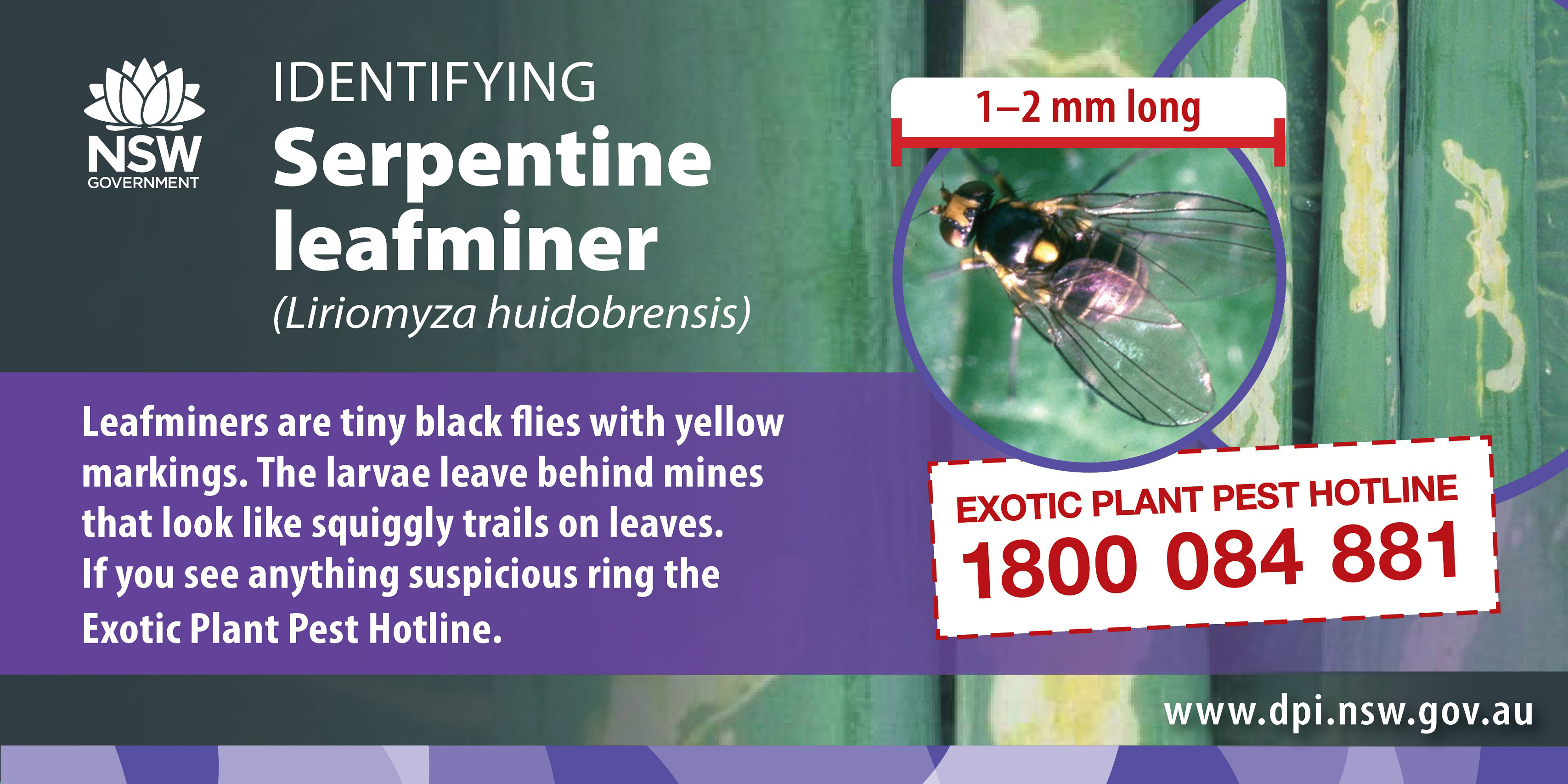
Residents in Western Sydney Region are urged to look out for signs of damage and presence of fly larvae following the detection of Serpentine leafminer in a vegetable crop.
NSW Department of Primary Industries (DPI) Manager Biosecurity Prevention & Preparedness Dr Chris Anderson said Western Sydney is a major horticultural and vegetable growing region.
“The Serpentine leafminer, also known as Pea leafminer, Liriomyza huidobrensis pose a serious threat to melons, vegetables, onions, grains, cotton, ornamentals and production nurseries,” Dr Anderson said.
“Leafminers look like tiny blackish flies, but the most obvious sign is the distinctive trails or squiggle patterns the larvae leave behind on plant leaves.
“The larvae feed internally on plant tissue, particularly the leaf, creating the classic mining trails that are associated with infestation.
“The larvae then pupate in soil, hatching out as flies, which lay eggs on surrounding host plants spreading infestation and increasing damage.
“Damaged plants commonly have reduced yield and in some cases are completely destroyed.
“It’s important for growers to be alert and report signs of this unwanted pest species in vegetable crops and nursery production.”
Currently NSW DPI and Greater Sydney Local Land Services staff are undertaking surveillance surveys across Western Sydney vegetable growers and nurseries to determine the extent of the incursion, which will inform the feasibility of eradication.
Everyone is encouraged to report any signs of leaf mining in vegetables to the Exotic Plant Pest Hotline on 1800 084 881 or send clear photographs via an online form or to biosecurity@dpi.nsw.gov.au with your contact details.
Watch Out For Environmental Invaders Frogbit In Camden
November 10, 2020
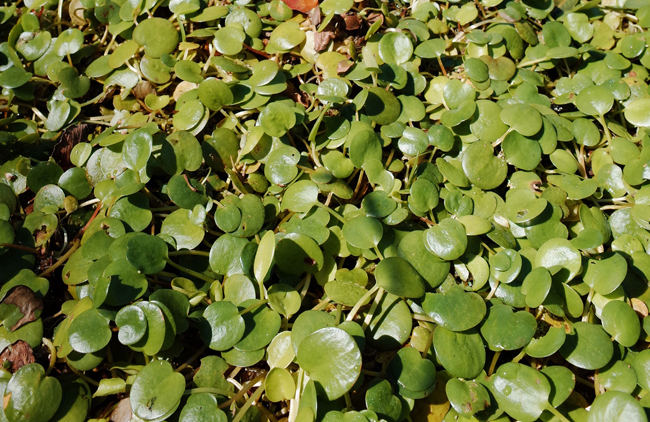 Camden Council residents have been alerted to be on the lookout for frogbit, an invasive, smothering waterweed which poses a serious threat to our environment, after the weed was found by a council biosecurity officer in local Rossmore dams and in Rileys and South Creek.
Camden Council residents have been alerted to be on the lookout for frogbit, an invasive, smothering waterweed which poses a serious threat to our environment, after the weed was found by a council biosecurity officer in local Rossmore dams and in Rileys and South Creek.
NSW Department of Primary Industries (DPI) State Priority Weeds coordinator, Charles Mifsud, said DPI is working with council and Greater Sydney Local Land Services to eradicate the frogbit, Limnobium laevigatum, infestation.
“It’s likely frogbit was flushed downstream during heavy summer rain events from an upstream infestation and surveillance is continuing to detect and eradicate the weed,” Mr Mifsud said.
“Fortunately, no frogbit has been found during inspections of properties near the confirmed infestation sites.
“Frogbit, or Amazon frogbit, is native to Central and South America and it is illegal to grow or sell the plant in NSW as it poses a serious biosecurity risk.
“Plants which have been illegally sold for use in ponds and aquariums were dumped and have now infested our waterways."
The first known incursion of frogbit in NSW waterways was at Green Point in 2017 and infestations have since been found in the Georges River, Prospect Creek, Fairfield, Smithfield, Greystanes, Plumpton, Bulahdelah, Cowra, Forster and Lismore.
All known infestations in NSW have been treated to eradicate the devastating weed, which forms large dense mats across the water's surface, prevents native water plants from growing, reduces light, food and shelter for fish and other aquatic animals and can block waterways and irrigation channels.
Mr Mifsud said frogbit has been found in backyard ponds and aquariums and for sale in aquarium shops, at markets and online.
“If you suspect a plant in your yard or our waterways or for sale at a market, shop or online is frogbit, please call the NSW DPI Biosecurity Helpline 1800 680 244 or your local council, who can assist in identification and eradication,” he said.
“Frogbit is a nasty weed and we need everyone to know this plant must not be sold or grown in NSW.”
More information and photographs of frogbit are available online.
Wanted: Seeds To Save Critically Endangered Plants From Fungal Disease
November 9, 2020
Land holders and property owners across the state are being asked to keep their eyes peeled for scrub turpentine and native guava on their properties as the NSW Government Saving our Species program establishes an emergency seedbank for these critically endangered native shrubs.
Saving our Species Senior Threatened Species Officer Craig Stehn said populations of scrub turpentine (Rhodamnia rubescens) and native guava (Rhodomyrtus psidioides) were in rapid decline due to Myrtle rust, a fungal disease that affects plants within the Myrtaceae family.
"Myrtle rust is most easily identified by the bright yellow spores which develop on new growth," said Mr Stehn.
"The fungus usually attacks young leaves and new shoots. With post-fire re-sprouting and germination events starting to occur, understanding the impact and spread of myrtle rust is more important than ever.
"Scrub turpentine and native guava are two critically endangered species from the Myrtaceae family that are extremely susceptible to Myrtle rust, with both of these species experiencing severe population decline over the past decade as a result of the disease.
"To save them, we're working with the Royal Botanic Gardens Sydney and their Australian PlantBank facility to establish an emergency collection of seeds and plant material, which will be used for important research into disease resistance and breeding, as well as a source for potential future translocation projects.
"While we've collected cuttings from approximately 300 plants at more than 40 locations between Sydney and the Queensland border so far, collecting more seeds is our priority and we need the community's help.
"With the scrub turpentine and native guava across the state currently flowering and fruiting, now is the perfect time for land holders with these plants on their properties to get in touch with us and help to conserve these critically endangered native plants," said Mr Stehn.
Saving our Species has projects in place for three threatened plants currently impacted by Myrtle rust and is also leading a larger Myrtle Rust Key Threatening Process project to look more broadly at Myrtle rust impacts and conservation actions to help.
Land holders with flowering or fruiting scrub turpentine or native guava on their properties are encouraged to contact Craig Stehn on sosmyrtlerust@rbgsyd.nsw.gov.au
Scrub turpentine (Rhodamnia rubescens) is a rainforest tree which grows to 25m tall, with reddish-brown, stringy bark, triple-veined leaves, small (8mm) white fragrant flowers and fleshy berries (7mm) turning black when mature.
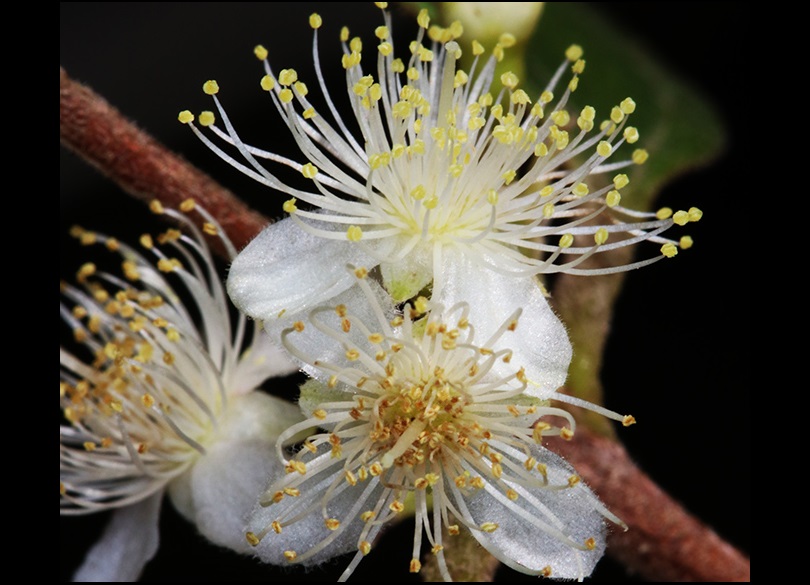
Scrub Turpentine, Rhodamnia rubescens flower Credit: Gavin Phillips/DPIE
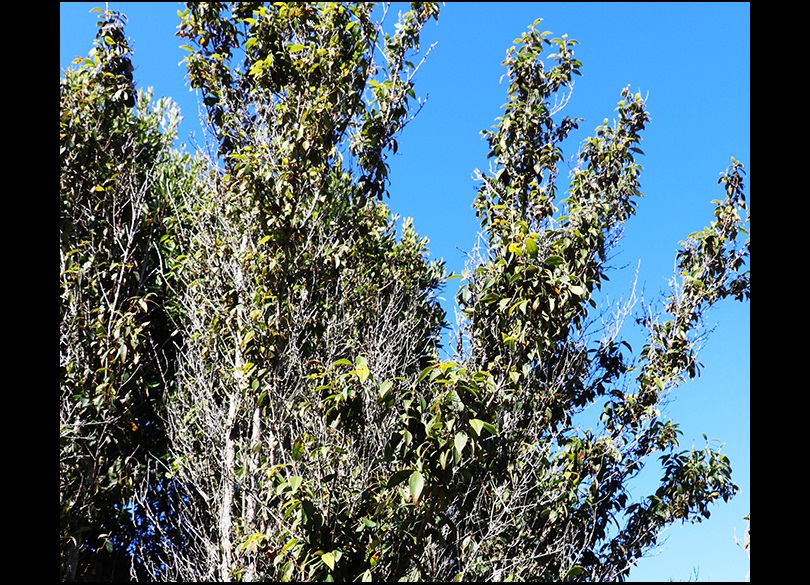
Scrub Turpentine, Rhodamnia rubescens Credit: Gavin Phillips/DPIE
Rhodomyrtus psidioides usually grows to around 12m tall and has brown scaly bark, white flowers (15mm) and a fleshy berry (12mm) turning yellow when mature.
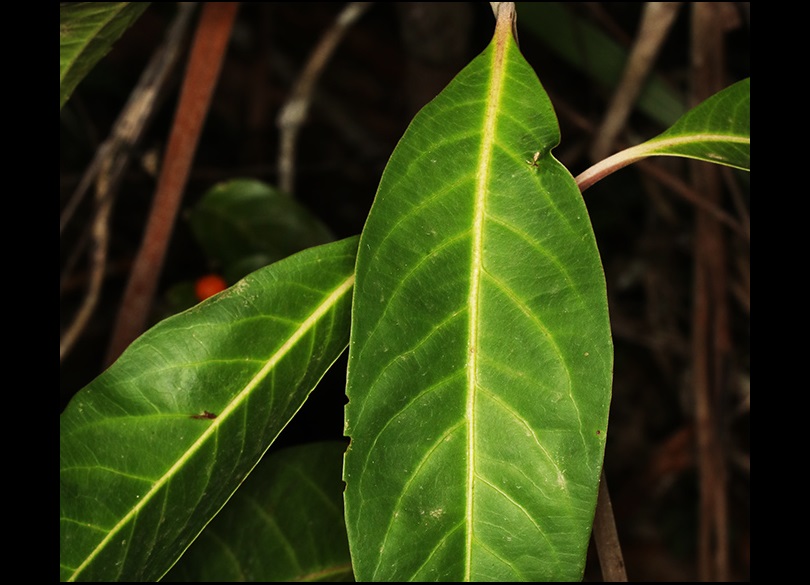
Native Guava, Rhodomyrtus psidioides Credit: Gavin Phillips/DPIE
NSW's Only Wangarru (Yellow-Footed Rock-Wallaby) Population Bouncing Back
November 9, 2020
Recent rain in outback NSW is bringing good news for the state's only population of Wangarru (yellow-footed rock-wallabies) after years of drought impacts.
Department of Planning, Industry and Environment Saving our Species Project Officer Dr Sarah Bell said the most recent survey has finally shown an increase in numbers.
"In NSW the Wangarru is known from a single population on and adjacent to Mutawintji National Park and Mutawintji Nature Reserve.
"The wallabies have been surveyed every year since 1980 in one of the longest running aerial survey studies in NSW.
"We know the drought conditions of the last few years hit them hard.
"Numbers fell from 155 to 63 between the survey in 2017 to last year.
"The good news is this year's count has seen an increase to 75.
"This is a promising sign for the species and means considerable effort in fox and goat control, funded through the Saving our Species program, is helping to give the wallabies their best chance at bouncing back, now that conditions have improved.
"The Wangarru is not just ecologically important as the most easterly population of the species, but is also culturally significant to the local Aboriginal community.
"Its significance was a key consideration by the Mutawintji Board of Management when they purchased Nuntherungie station which was added to the national parks estate in 2019.
"Numbers are still low, but with the far west receiving more rain in the last few weeks, improving their habitat, we are hopeful next year's surveys will see a further increase in numbers," Dr Bell said.
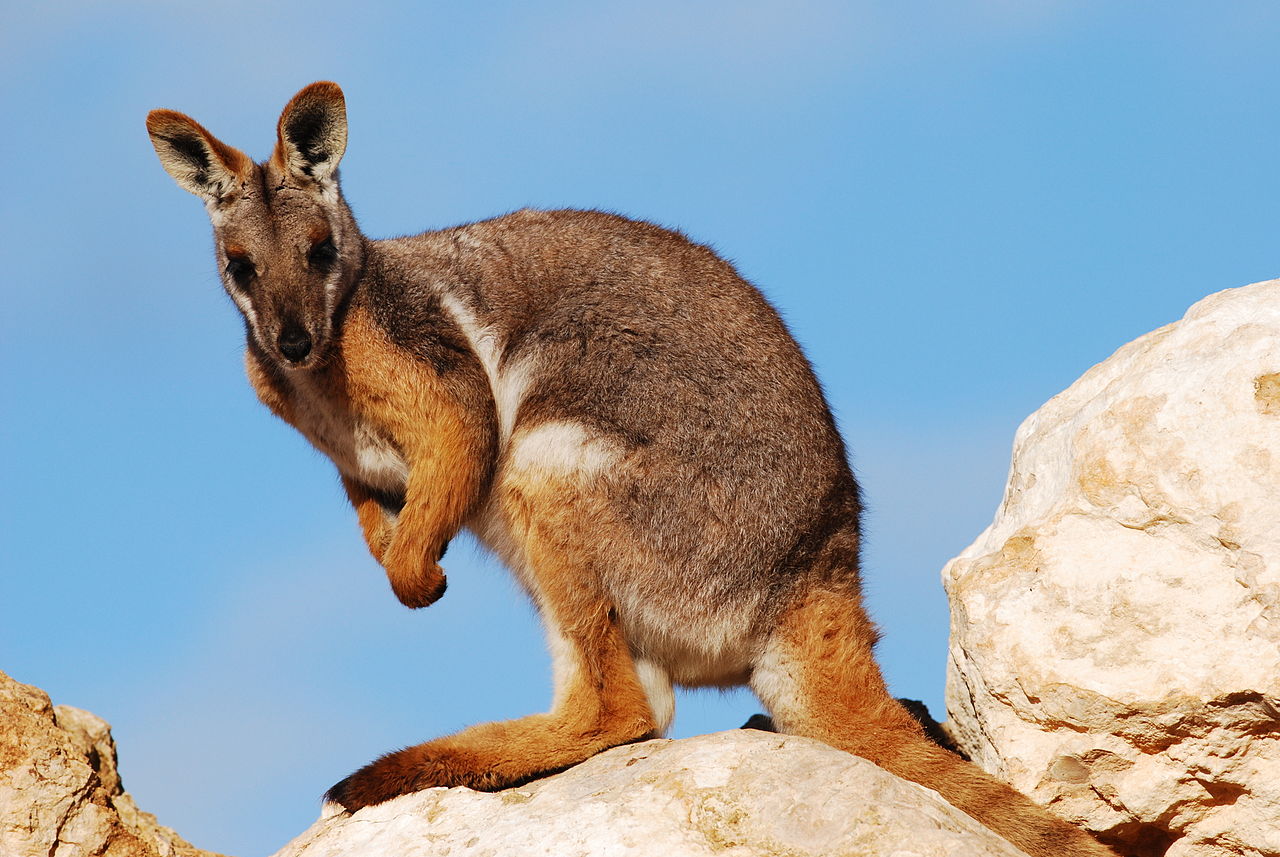
Yellow-footed rock-wallaby (Petrogale xanthopus) photo by Peripitus
Population Boom For Kooragang Island Frogs
November 11, 2020
Once struggling from drought conditions, Kooragang Island has recently become a veritable frog haven, and vulnerable populations are thriving.
Saving our Species staff and bush regeneration volunteers combined their efforts to improve the habitat of species such as the green and golden bell frog, following a period of prolonged drought.
NPWS Bush Regeneration and Volunteering Officer, Boyd Carney, said the results of the project were extremely positive.
"Frogs in this area were greatly affected by low rainfall, so the idea was to enhance their habitat through plantings and weed removal and make it easier for them to move across the landscape and access the available wetland habitat across the island," he said. "Luckily, we did get some rain, and this has greatly benefited the frog populations and improved the odds of survival.
"Volunteers play a major part in threatened species conservation, not only with their contributions to on-groundwork, but also in other ways, such as reporting sightings of threatened species which help researchers track what is happening with species over time. They bring so much energy and passion to their work, and their efforts are much appreciated.
"This work will improve terrestrial habitat long term, support the booming population, and assist in the ongoing survival of frog species."
National Parks and Wildlife Service (NPWS) will continue to work with Hunter Local Land Services and Conservation Volunteers Australia to prioritise the ongoing recovery of the frogs.
The site is also partly managed by Hunter Central Coast Development Corporation, BHP, Newcastle Coal Infrastructure Group and University of Newcastle.
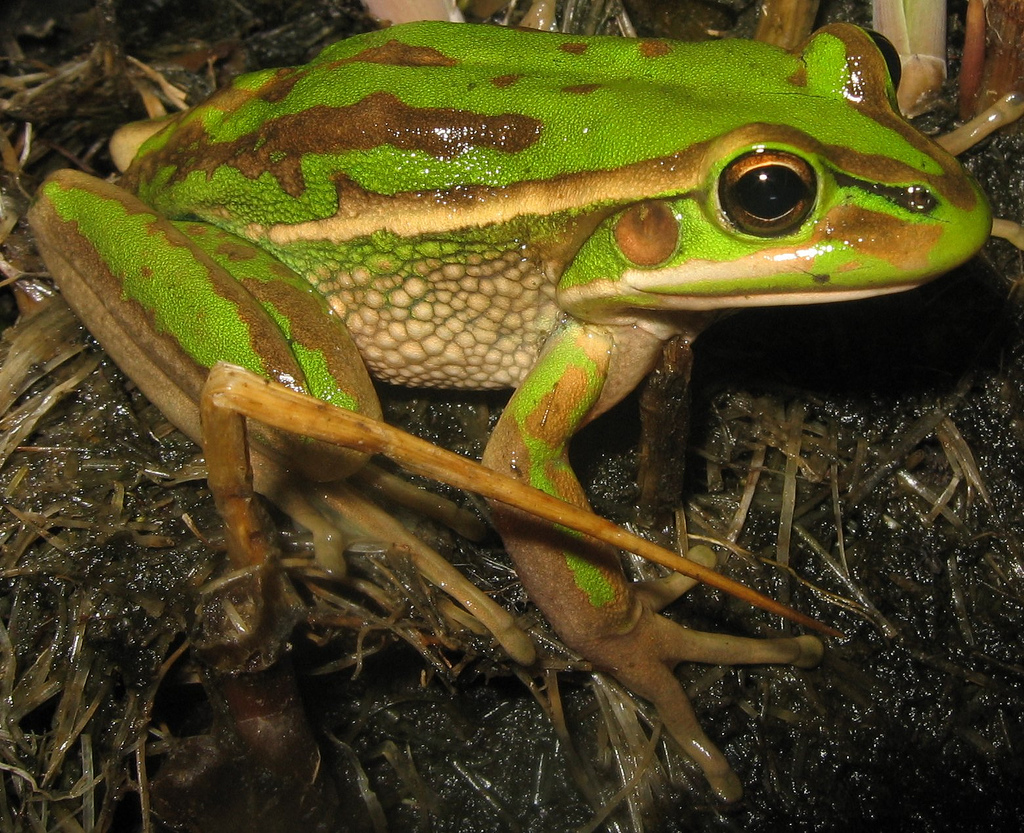
Green and golden bell frog (Litoria aurea).
Trail Bike Operation Keeping Northern Rivers National Parks Safe
November 12, 2020
NSW National Parks and Wildlife Service (NPWS) and NSW Police have conducted a joint law enforcement operation tackling illegal trail bike riding in Northern River's national parks.
NPWS Area Manager Jenny Atkins said that while the vast majority of visitors to national parks in the Northern Rivers area are fantastic, NPWS does unfortunately see some people engaging in illegal activities.
"Riding unregistered motorbikes or driving in areas closed to vehicles, without authorisation, can attract heavy penalties. These activities are not only dangerous, but they also disturb park neighbours and put other visitors, local wildlife and park assets at risk," said Ms Atkins.
"This joint operation gave NPWS the chance to work closely with local police and address these issues.
"Over the course of the two-day operation, police issued one infringement notice and several cautions for offences including riding where vehicle access is restricted and riding unregistered trail bikes.
"As we head into summer, we'd like to remind visitors to our region's parks to ensure they abide by NSW law and NPWS regulations.
"There are a number of public trails available across the Northern Rivers region for four-wheel drivers and licenced trail bike riders to legitimately enjoy.
"Our national parks are home to many rare and threatened species, including the Bush Stone-curlew and the Red-legged Pademelon. We want to continue to protect these special plants and animals, as well as ensure our visitors feel safe while they are enjoying our beautiful parks," said Ms Atkins.
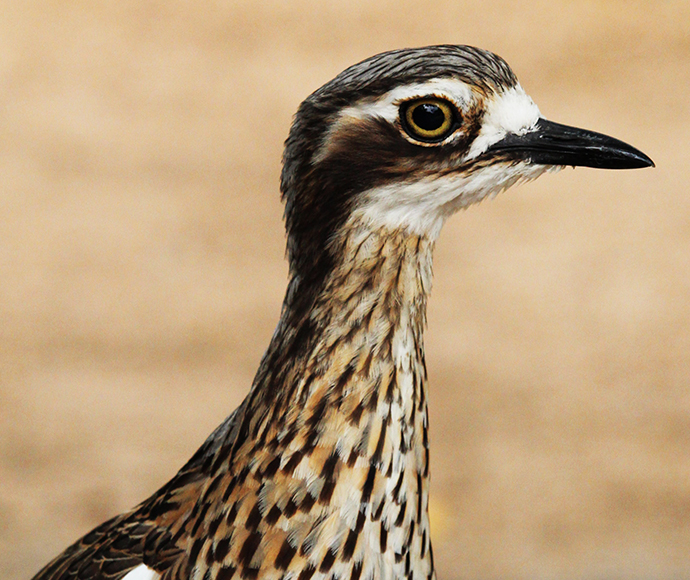
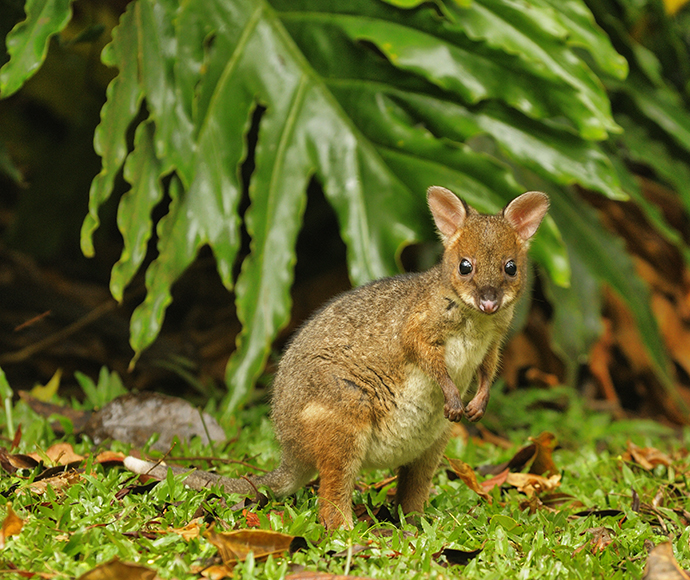
Bush Stone-curlew, Burhinus grallarius, Endangered Credit: David Martin/DPIE Red-legged Pademelon (Thylogale stigmatica), Vulnerable Credit: Dave Watts/DPIE
NPWS is also targeting unsafe and illegal 4WD usage in parks and reserves on the Tweed Coast. Eleven driving offences and seven infringement notices have been issued in the last two weeks for individuals driving a vehicle in a national park, not on a recognised road or trail.
Further joint operations between NPWS and local police are planned over the summer period.
Members of the public can call the NPWS general enquiry line on 1300 361 967 to report illegal activity.
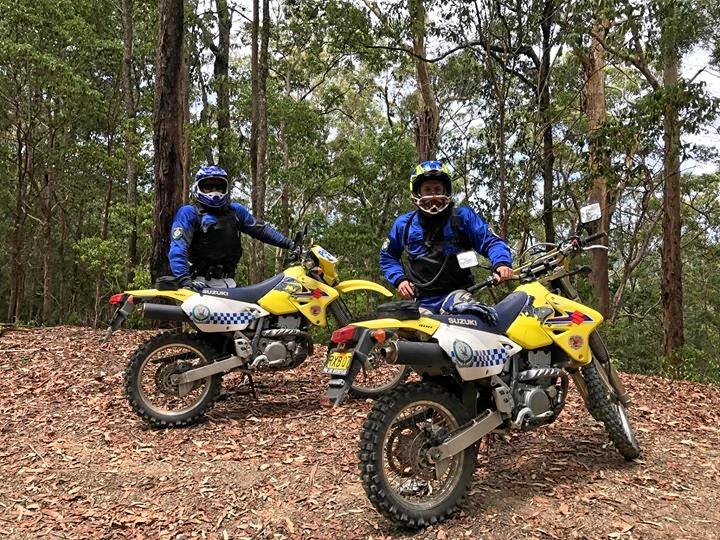
Local Police on NPWS trail bikes during joint operation Credit: Public Affairs/DPIE
Energy Superpower Plan To Turbocharge Renewable Energy Zones And Pumped Hydro
November 9, 2020
More than 9000 jobs and $32 billion of private investment is expected to roll into the regions by 2030, under the NSW Government’s Electricity Infrastructure Roadmap, released today.
The Roadmap lays out the Government’s 20 year plan to deliver Renewable Energy Zones, energy storage such as pumped hydro, and on demand supply like gas and batteries, needed to reduce emissions and provide cheap, reliable electricity across the State.
Deputy Premier John Barilaro said the Roadmap will deliver Australia’s first Renewable Energy Zones in the Central West and New England regions by 2030.
“The stimulus the Renewable Energy Zones will provide to regional communities will unlock over 9000 new jobs and will be a huge boost to farmers and land owners, with $1.5 billion in lease payments expected to go to landholders hosting new infrastructure by 2042,” Mr Barilaro said.
“The Roadmap will make sure that renewables are developed where regional communities want them and where they are compatible with farming.”
Treasurer Dominic Perrottet said the Roadmap will grow the economy, create jobs and deliver an expected $32 billion of private sector investment in electricity infrastructure by 2030, part of the NSW Government’s COVID-19 Recovery Plan.
“Coming out of this crisis, not only are we stimulating the economy to create jobs now, we are looking towards the reforms NSW needs to secure our future,” Mr Perrottet said.
“This is a big productivity reform, with the Roadmap projected to deliver NSW some of the cheapest energy prices in the OECD and shore up our energy security.”
Energy Minister Matt Kean said the Roadmap will support the private sector to bring 12 gigawatts of renewable energy and 2 gigawatts of storage, such as pumped hydro, online by 2030.
“Our priority is to keep the lights on and get power prices down, with the Roadmap forecast to save NSW households an average of $130 and small businesses an average of $430 on their electricity bills each year,” Mr Kean said.
“NSW has some of the best natural resources in the world and this Roadmap is about acting now to leverage our competitive advantage and to position NSW as an energy superpower.”
Water Minister Melinda Pavey said the Roadmap includes $50 million in grants to support the delivery of pumped hydro projects.
“Pumped hydro is a proven form of large-scale storage and NSW has some fantastic pumped hydro opportunities,” Ms Pavey said.
“This plan delivers the long term certainty needed for the private sector to invest now and drive jobs and investment in the regions.”
Member for Dubbo Dugald Saunders said the Roadmap cements the region as the renewable hub of the future.
“Our community is thrilled to have the State’s first Renewable Energy Zone right here in the Central West unlocking opportunities for jobs and investment that will be the foundation for our future prosperity,” Mr Saunders said.
The Roadmap sets out a plan to modernise the State’s electricity infrastructure by:
- cutting red-tape and speeding up approvals for transmission infrastructure in Renewable Energy Zones, while protecting the interests of consumers
- reating a long term investment signal for new generation in Renewable Energy Zones, long duration storage such as pumped hydro, and on demand supply, like gas and batteries
- making sure that renewable projects proceed where local communities want them and in ways that are consistent with farming.
For further information and to view the Roadmap visit: Electricity Infrastructure Roadmap
Manufacturing Renewables Taskforce To Boost Regional Jobs And Local Industry
November 10, 2020
Local manufacturing will boom, with a new Manufacturing Renewables Taskforce to find ways to drive the use of NSW materials in building the State’s Renewable Energy Zones, announced today.
Deputy Premier John Barilaro said we need to support our NSW manufacturers by putting the policies in place that create local jobs and support local industry.
“We currently import the more than 86,500 tonnes of steel that form the foundations for critical energy infrastructure – including some finished manufactured goods,” Mr Barilaro said.
“As we come out of this recession, we need to lead by example by backing our local supply chains, local manufacturers and local jobs.
“This Taskforce will make sure we have the knowledge we need to do just that, and unlock regional NSW’s renewable energy manufacturing potential.”
Energy Minister Matt Kean said the Taskforce will look at everything from material sourcing and supply to contracting arrangements, and explore ways to give NSW manufacturers a competitive advantage in emerging ‘green’ supply industries.
“Industry tells us we will need more than 650,000 tonnes of steel to deliver our three Renewable Energy Zones – my priority is finding ways to make sure that the steel and other products that power NSW, are made in NSW by NSW manufacturers,” Mr Kean said.
“The Taskforce will look at terms we can put in our electricity infrastructure contracts and tender rules which will drive the use of NSW products, where they are cost competitive.”
The Manufacturing Renewables Taskforce will include representatives from the steel, aluminium, cement, concrete and manufacturing industries, the workers unions, renewable development stakeholder groups and the NSW Government.
A Jobs in Renewable Energy Zones Taskforce will also be established to ensure jobs created in local communities hosting the new infrastructure, go to local people.
3 billion animals were in the bushfires' path. Here's what the royal commission said (and should've said) about them
Ashleigh Best, University of Melbourne; Christine Parker, University of Melbourne, and Lee Godden, University of MelbourneThe Black Summer bushfires were devastating for wildlife, with an estimated three billion wild animals killed, injured or displaced. This staggering figure does not include the tens of thousands of farm animals who also perished.
The bushfire royal commission’s final report, released on October 30, recognised the gravity of the fires’ extraordinary toll on animals.
It recommended governments improve wildlife rescue arrangements, develop better systems for understanding biodiversity and clarify evacuation options for domestic animals.
While these changes are welcome and necessary, they’re not sufficient. Minimising such catastrophic impacts on wildlife and livestock also means reducing their exposure to these hazards in the first place. And unless we develop more proactive strategies to protect threatened species from disasters, they’ll only become more imperilled.
What The Royal Commission Recommended
The royal commission recognised the need for wildlife rescuers to have swift and safe access to fire grounds.
In the immediate aftermath of the bushfires, some emergency services personnel were confused about the roles and responsibilities of wildlife rescuers. This caused delays in rescue operations.
To address this issue, the royal commission sensibly suggested all state and territory governments integrate wildlife rescue functions into their general disaster planning frameworks. This would improve coordination between different response agencies.
Read more: The bushfire royal commission has made a clarion call for change. Now we need politics to follow
Another issue raised by the commission was that Australia does not have a comprehensive, central source of information about its native flora and fauna. This is, in part, because species listing processes are fragmented across different jurisdictions.
For example, a marsupial, the white-footed dunnart, is listed as vulnerable in NSW, but is not on the federal government’s list of threatened species.
To better manage and protect wild animals, governments need more complete information on, for example, their range and population, and how climate change threatens them.
As a result, the royal commission recommended governments collect and share more accurate information so disaster response and recovery efforts for wildlife could be more targeted, timely and effective.

Helping Animals Help Themselves
While promising, the measures listed in the royal commission’s final report will only tweak a management system for wildlife already under stress. Current legal frameworks for protecting threatened species are reactive. By the time governments intervene, species have often already reached a turning point.
Governments must act to allow wild animals the best possible chances of escaping and recovering on their own.
This means prioritising the protection and restoration of habitat that allows animals to get to safety. As a World Wildlife Fund report explains, an animal’s ability to flee the fires and find safe, unburnt habitat — such as mesic (moist) refuges in gullies or near waterways — directly influenced their chances of survival.
Read more: Summer bushfires: how are the plant and animal survivors 6 months on? We mapped their recovery
Wildlife corridors also assist wild animals to survive and recover from disasters. These connect areas of habitat, providing fast moving species with safe routes along which they can flee from hazards.
And these corridors help slow moving species, such as koalas, to move across affected landscapes after fires. This prevents them from becoming isolated, and enables access to food and water.
Hazard reduction activities, such as removing dry vegetation that fuels fires, were also a focus for the royal commission. These can coexist with habitat conservation when undertaken in ecologically-sensitive ways.
As the commission recognised, Indigenous land and fire management practices are informed by intimate knowledge of plants, animals and landscapes. These practices should be integrated into habitat protection policies in consultation with First Nations land managers.
The commission also suggested natural hazards, such as fire, be counted as a “key threatening process” under national environment law. But it should be further amended to protect vulnerable species under threat from future stressors, such as disasters.
Governments also need to provide more funding to monitor compliance with this law. Another new World Wildlife Fund report warns that unless it is properly enforced, a further 37 million native animals could be displaced or killed as a result of habitat destruction this decade.
And, as we saw last summer, single bushfire events can push some populations much closer to extinction. For example, the fires destroyed a large portion of the already endangered glossy black-cockatoo’s remaining habitat.
What About Pets And Farm Animals?
Pets and farm animals featured in the commission’s recommendations too.
During the bushfires, certain evacuation centres didn’t cater for these animals. This meant some evacuees chose not to use these facilities because they couldn’t take their animals with them.
To guide the community in future disasters, the commission said plans should clearly identify whether or not evacuation centres can accommodate people with animals.
Read more: Seven ways to protect your pets in an emergency
Evacuation planning is crucial to effective disaster response. However, it is unfortunately not always feasible to move large groups of livestock off properties at short notice.
For this reason, governments should help landholders to mitigate the risks hazards pose to their herds and flocks. Researchers are already starting to do this by investigating the parts of properties that were burnt during the bushfires. This will help farmers identify the safest paddocks for their animals in future fire seasons.
Disasters are only expected to become more intense and extreme as the climate changes. And if we’re to give our pets, livestock and unique wildlife the best chance at surviving, it’s not enough only to have sound disaster response. Governments must preemptively address the underlying sources of animals’ vulnerability to hazards.
Read more: How we plan for animals in emergencies ![]()
Ashleigh Best, PhD Candidate and Teaching Fellow, University of Melbourne; Christine Parker, Professor of Law, University of Melbourne, and Lee Godden, Director, Centre for Resources, Energy and Environmental Law, Melbourne Law School, University of Melbourne
This article is republished from The Conversation under a Creative Commons license. Read the original article.
Zali Steggall's new climate change bill comes just as economic sectors step up
Anna Malos, ClimateWorks Australia and Amandine Denis-Ryan, Monash UniversityYesterday, Zali Steggall, the independent member for Warringah, introduced her long-awaited climate change bill to the Australian parliament.
Much of the debate around the bill centres on what needs to be done for Australia to reach net zero emissions by 2050. That’s a crucial discussion — but it’s equally vital to recognise what’s already been committed.
Our project, the Net Zero Momentum Tracker, monitors Australia’s journey towards net zero emissions, tracking climate commitments and progress in key sectors of the economy. This includes superannuation, transport, retail, property and local government, and a forthcoming analysis of the resources sector.
We’ve found progress is, in general, going well. These sectors are increasingly making more climate-active commitments, which means the moment is right for precisely the kind of pivot Steggall’s bill seeks to facilitate.
What The Climate Change Bill Proposes
Steggall has garnered huge support outside of politics. In a joint letter this week, more than 100 Australian businesses, industry groups and community organisations endorsed the bill as a critical step in the recovery from the pandemic.
This included Oxfam, the Business Council of Australia, the ACTU, the Australian Medical Association and our organisation, ClimateWorks Australia
Along with the 2050 target, the bill proposes the establishment of an independent Climate Change Commission. It also adopts the government’s low emissions technology roadmap and would require the government to introduce risk assessment and adaptation plans.
To reach the 2050 target, the bill calls for a process to review the target every five years, and ensure independent advice on five-yearly emissions budgets.
An emissions budget sets the amount of greenhouse gases that can be emitted over five-year periods — in line with requirements for the Paris Agreement on climate. This is important because the amount of global warming depends on cumulative emissions, not emissions in any one year.
Tracking The Sectors
Australia can no longer consider a commitment to a net zero target as a matter of ideology or a moral gesture. Increasingly, it’s simple economic common sense, especially for investors.
In 2019, Geoff Summerhayes from the Australian Prudential Regulation Authority pointed out that climate change now constitutes “a legally foreseeable risk facing many different companies in a range of different industries”. As such, the financial sector has an obligation to act.
In 2020, the level of ambition in the superannuation sector rose considerably, with REST super now joining Cbus, HESTA and UniSuper with net zero pledges.
Read more: Super funds are feeling the financial heat from climate change
Similarly, the recent ANZ announcement of “strong action to support the Paris Agreement” signals that all the major banks and insurers are moving away from thermal coal, as the International Energy Agency declares solar energy to be the cheapest source of electricity in history.
Certainly, some sectors of the Australian economy are moving faster than others. Our analysis of 21 major property companies found 90% had set an emissions reduction target, while nearly a third were already committed to net zero.
The local government sector is equally proactive. Over a third of the largest local governments we assessed (representing a fifth of the Australian population) have committed to reaching zero community emissions by or before 2050.
And more than half are acting to reduce their operational (or direct) emissions by, for instance, installing solar panels and switching their vehicle fleet to electric vehicles.
By contrast, our analysis showed the retail and transport sectors have a long way to go before they’re aligned with net zero.
Asking ‘How’, Not ‘Why’
Even in a historically difficult sector like resources, progress is being made.
BHP, for instance, now says it can flourish under conditions compatible with the Paris Agreement. Rather than posing a problem for business, action to decarbonise the global economy will, it declares, present “opportunities to invest in commodities such as potash, nickel and copper”, which will “provide a strong foundation” for its business.
This shows when it comes to net zero many of Australia’s biggest companies no longer ask “why”, but instead focus on “how”.
In part, that’s because businesses that don’t change know they increasingly risk isolation.
For example, the International Energy Agency said in its annual report that demand for Australian thermal coal has peaked, and renewables will meet 80% of the world’s energy demands in the coming years.
Japan, South Korea and the European Union have committed to reaching net zero by 2050, and US President-elect Joe Biden says his administration will make the same pledge. China also recently committed to reaching net zero by 2060.
That means the vast majority of Australia’s exports are going to trading partners who have committed to transform their economies.
This will result in a shift in demand from high-carbon products and services, such as thermal coal, towards zero or near zero carbon alternatives, such as renewable hydrogen.
An Opportunity, Not A Threat
Such a demand also presents extraordinary opportunities. The international transition to cleaner economies is a chance for Australia to become a renewable energy superpower.
After all, Australia possesses the world’s third-largest reserves of lithium and currently produces nine of the ten elements required for lithium-ion batteries.
Likewise, by 2030, Australia could be using renewable electricity and water to produce 500,000 tonnes of green hydrogen annually, one of the most important commodities of the transition into a clean economy.
Providing Certainty To Businesses
In tracking the momentum to net zero, we’ve seen the importance of clear targets in raising ambition, encouraging innovation and fostering the deployment of known solutions quickly and at scale.
And a parliamentary commitment to decarbonisation at the federal level, backed by interim targets set every five years, would provide businesses and the public with the certainty they need to plan.
Read more: The UK has a national climate change act – why don't we?
Many other countries, such as Britain, already have their own climate change acts. So, too, does the state of Victoria.
Across the country, all the state and territory governments have made net zero commitments – and our assessment of local governments found many of them to be taking strong stands, too. It’s time for the federal parliament to get on board.![]()
Anna Malos, Project Manager, climate and energy policy, ClimateWorks Australia and Amandine Denis-Ryan, Head of National Programs, ClimateWorks Australia, Monash University
This article is republished from The Conversation under a Creative Commons license. Read the original article.
NSW has joined China, South Korea and Japan as climate leaders. Now it's time for the rest of Australia to follow
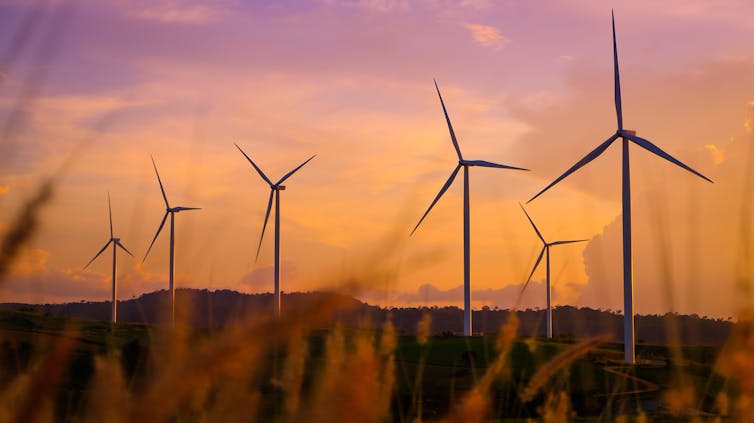
It’s been a busy couple of months in global energy and climate policy. Australia’s largest trading partners – China, South Korea and Japan – have all announced they will reach net-zero emissions by about mid-century. In the United States, the incoming Biden administration has committed to decarbonising its electricity system by 2035.
These pledges have big implications for Australia. With some of the best renewable resources in the world, we have much to gain from the transition. And this week, the New South Wales government embraced the opportunity.
Its new A$32 billion Electricity Infrastructure Roadmap will, among other things, support the construction of 12 gigawatts of new renewable energy capacity by 2030. This is six times the capacity of the state’s Liddell coal-fired power station, set to close in 2023.
The roadmap was developed by NSW Environment Minister Matt Kean through extensive consultation with industry and others, including ourselves. While we believe a national carbon price is the best way to reduce emissions, the NSW approach nonetheless sets an example for other states looking to increase renewable energy capacity. So let’s take a closer look at the plan.
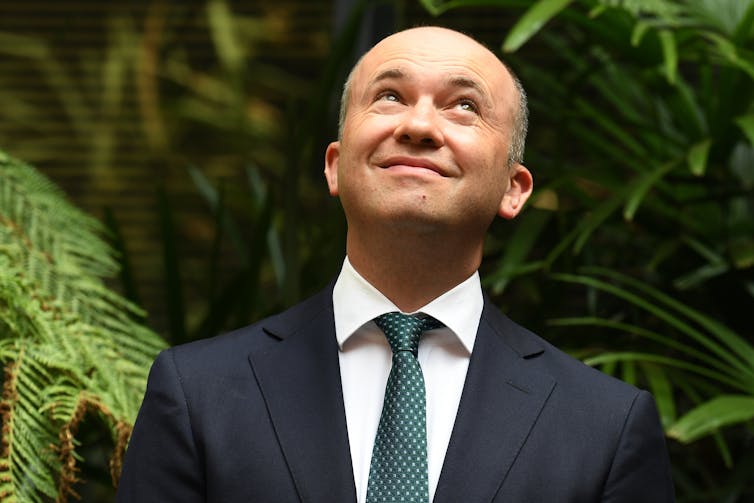
What’s The Roadmap All About?
The roadmap acknowledges that within 15 years, three-quarters of NSW’s coal-fired electricity supply is expected to reach the end of its technical life. It says action is needed now to ensure cheap, clean and reliable electricity, and to set up NSW as a global energy superpower.
The plan involves a coordinated approach to transmission, generation and storage. By 2030, the government aims to:
deliver about 12 gigawatts of new transmission capacity through so-called “renewable energy zones” in three regional areas by 2030. It would most likely be generated by wind and solar
support about 3 gigawatts of energy storage to help back up variable renewable energy supplies. This would involve batteries, pumped hydro, and “hydrogen ready” gas peaking power stations
attract up to A$32 billion in private investment in regional energy infrastructure investment by 2030
support more than 6,300 construction and 2,800 ongoing jobs in 2030, mostly in regional NSW
reduce NSW’s carbon emissions by 90 million tonnes.
The plan also aims to see the average NSW household save about A$130 a year in electricity costs, although this might be hard to achieve in practice. And regional landholders hosting renewable projects on their properties are expected to earn A$1.5 billion in revenue over the next 20 years.
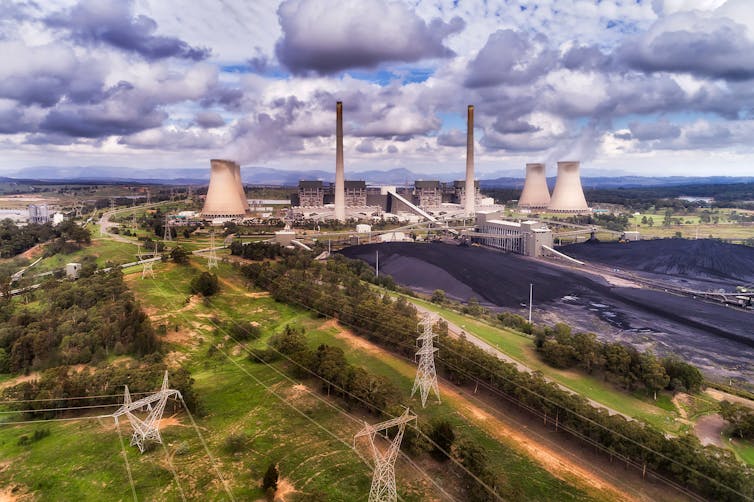
Giving Generators Options
One of the most innovative aspects of the NSW proposal is that generators will have two options when it comes to selling their electricity.
First, the government will appoint an independent “consumer trustee” to purchase electricity from generators at an agreed price – giving the generators the long-term certainty they need to invest. The trustee would then sell this electricity either directly to the market, or through contracts to retailers.
But the trustee will encourage generators to first seek a better price by finding their own customers, such as energy consumers and other electricity retailers.
Read more: Zali Steggall's new climate change bill comes just as economic sectors step up
This system is different to the approach adopted in Victoria and the ACT, where government contracts remove any incentive for generators to participate in the energy market. Over time, this limits market competition and innovation.
The NSW plan improves on existing state policies in another way – by aligning financial incentives to the physical needs of the system. The Consumer Trustee will enter into contracts with projects that produce electricity at times of the day when consumers need it, and not when the system is already oversupplied.
While this won’t be easy for the trustee to model, this approach is likely to benefit consumers more than in other jurisdictions where lowest-cost projects seem to be preferred, irrespective of whether the energy they produced is needed by consumers.
One shortcoming of the roadmap is it does not financially reward existing low-emissions electricity generators in NSW, nor does it charge carbon-heavy electricity producers for the emissions they produce. This could be corrected in the future by integrating the policy into a nationally consistent carbon price, which transfers the cost of carbon pollution onto heavy emitters.
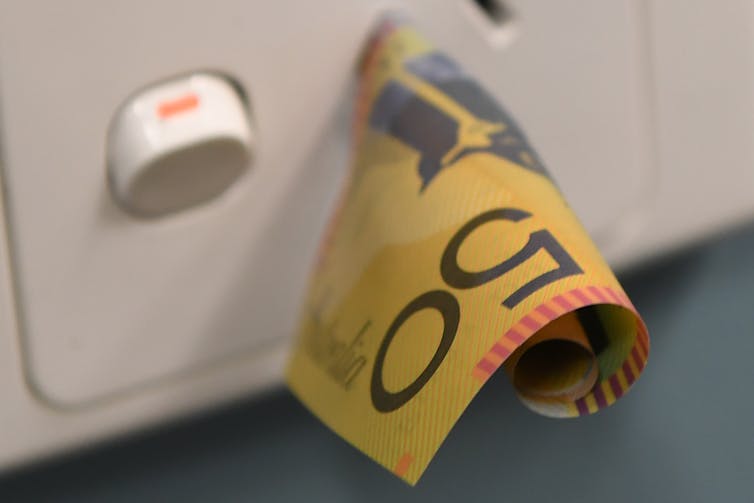
Why Is All This So Important?
NSW’s ageing coal-fired power stations are chugging along – albeit with ever-declining reliability. But it’s only a matter of time before something expensive needs fixing. This was the case with Hazelwood in Victoria: the old walls of the boilers had thinned to less than 2 millimetres. The repair cost was prohibitive and the station closed with just five months’ notice. Electricity prices shot up in response to unexpectedly reduced supply.
In NSW, the consumer trustee will be tasked with helping ensuring replacement generation is delivered in a timely way. This means developing new generation capacity well ahead of announced coal plant closures.
This is a helpful development. But ultimately a stronger measure will be needed to ensure coal plants give early notice of their intention to exit the market. The Grattan Institute has previously suggested coal generators put up bonds that are forfeited if they close early. We think this model is worth considering again.
Seize The Opportunity
As the world’s largest exporter of coal and LNG, Australia has much to lose as global economies shift to zero emissions. But our renewable energy potential means we also have much to gain.
Australia needs a durable, nationally consistent policy framework if we’re to seize the opportunities of the global transition to clean energy. The NSW roadmap is a significant step in the right direction.
Tim Nelson, Associate Professor of Economics, Griffith University and Joel Gilmore, Associate Professor, Griffith University
This article is republished from The Conversation under a Creative Commons license. Read the original article.
Tick Population Booming In Our Area
Residents from Terrey Hills and Belrose to Narrabeen and Palm Beach report a high number of ticks are still present in the landscape. Local Veterinarians are stating there has not been the usual break from ticks so far and each day they’re still getting cases, especially in treating family dogs.
To help protect yourself and your family, you should:
- Use a chemical repellent with DEET, permethrin or picaridin.
- Wear light-colored protective clothing.
- Tuck pant legs into socks.
- Avoid tick-infested areas.
- Check yourself, your children, and your pets daily for ticks and carefully remove any ticks using a freezing agent.
- If you have a reaction, contact your GP for advice.
 Shorebird Identification Booklet
Shorebird Identification Booklet
The Migratory Shorebird Program has just released the third edition of its hugely popular Shorebird Identification Booklet. The team has thoroughly revised and updated this pocket-sized companion for all shorebird counters and interested birders, with lots of useful information on our most common shorebirds, key identification features, sighting distribution maps and short articles on some of BirdLife’s shorebird activities.
The booklet can be downloaded here in PDF file format: http://www.birdlife.org.au/documents/Shorebird_ID_Booklet_V3.pdf
Paper copies can be ordered as well, see http://www.birdlife.org.au/projects/shorebirds-2020/counter-resources for details.
Download BirdLife Australia's children’s education kit to help them learn more about our wading birdlife
Shorebirds are a group of wading birds that can be found feeding on swamps, tidal mudflats, estuaries, beaches and open country. For many people, shorebirds are just those brown birds feeding a long way out on the mud but they are actually a remarkably diverse collection of birds including stilts, sandpipers, snipe, curlews, godwits, plovers and oystercatchers. Each species is superbly adapted to suit its preferred habitat. The Red-necked Stint is as small as a sparrow, with relatively short legs and bill that it pecks food from the surface of the mud with, whereas the Eastern Curlew is over two feet long with a exceptionally long legs and a massively curved beak that it thrusts deep down into the mud to pull out crabs, worms and other creatures hidden below the surface.
Some shorebirds are fairly drab in plumage, especially when they are visiting Australia in their non-breeding season, but when they migrate to their Arctic nesting grounds, they develop a vibrant flush of bright colours to attract a mate. We have 37 types of shorebirds that annually migrate to Australia on some of the most lengthy and arduous journeys in the animal kingdom, but there are also 18 shorebirds that call Australia home all year round.
What all our shorebirds have in common—be they large or small, seasoned traveller or homebody, brightly coloured or in muted tones—is that each species needs adequate safe areas where they can successfully feed and breed.
The National Shorebird Monitoring Program is managed and supported by BirdLife Australia.
This project is supported by Glenelg Hopkins Catchment Management Authority and Hunter Local Land Services through funding from the Australian Government’s National Landcare Program. Funding from Helen Macpherson Smith Trust and Port Phillip Bay Fund is acknowledged.
The National Shorebird Monitoring Program is made possible with the help of over 1,600 volunteers working in coastal and inland habitats all over Australia.
The National Shorebird Monitoring program (started as the Shorebirds 2020 project initiated to re-invigorate monitoring around Australia) is raising awareness of how incredible shorebirds are, and actively engaging the community to participate in gathering information needed to conserve shorebirds.
In the short term, the destruction of tidal ecosystems will need to be stopped, and our program is designed to strengthen the case for protecting these important habitats.
In the long term, there will be a need to mitigate against the likely effects of climate change on a species that travels across the entire range of latitudes where impacts are likely.
The identification and protection of critical areas for shorebirds will need to continue in order to guard against the potential threats associated with habitats in close proximity to nearly half the human population.
Here in Australia, the place where these birds grow up and spend most of their lives, continued monitoring is necessary to inform the best management practice to maintain shorebird populations.
BirdLife Australia believe that we can help secure a brighter future for these remarkable birds by educating stakeholders, gathering information on how and why shorebird populations are changing, and working to grow the community of people who care about shorebirds.
To find out more visit: http://www.birdlife.org.au/projects/shorebirds-2020/shorebirds-2020-program
Pittwater Reserves
Aussie Bread Tags Collection Points

NSW Senior Australian Of The Year
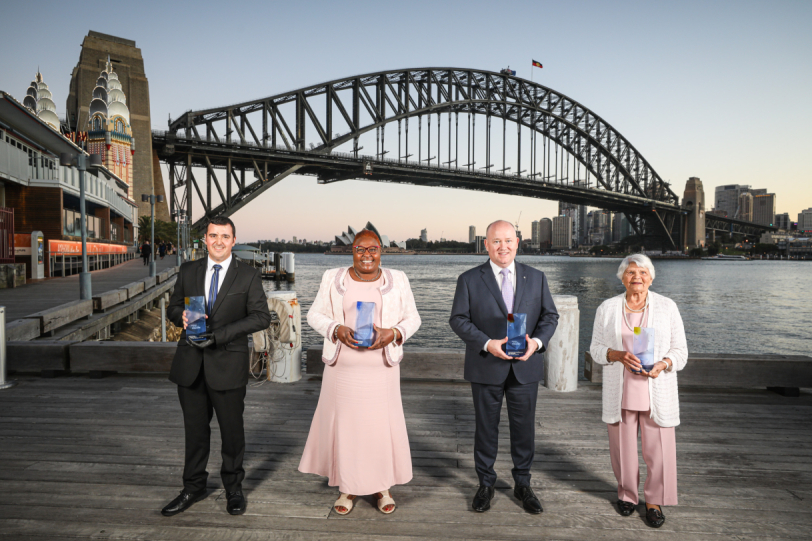
Finalists - NSW Senior Australian Of The Year
Senior Australians Of The Year Everywhere Else
Keep It Green: 1970
Pandemic Mental Health Support – Online And A Phone Call Away
- The Australian Centre for Grief and Bereavement will provide specialist information and support to residential aged care and home care recipients and their families who have been affected by COVID-19;
- Phoenix Australia – Centre for Posttraumatic Mental Health will deliver a sector-wide trauma-informed care package that provides trauma training and resources for aged care residents, their families and aged care staff, including through the establishment of a dedicated website; and
- Dementia Support Australia will implement a proactive engagement program to help alleviate the impacts of lockdown on aged care residents living with dementia.
Cedar Leigh-Jones - Kalani Ball Win Volkswagen Cronulla Open
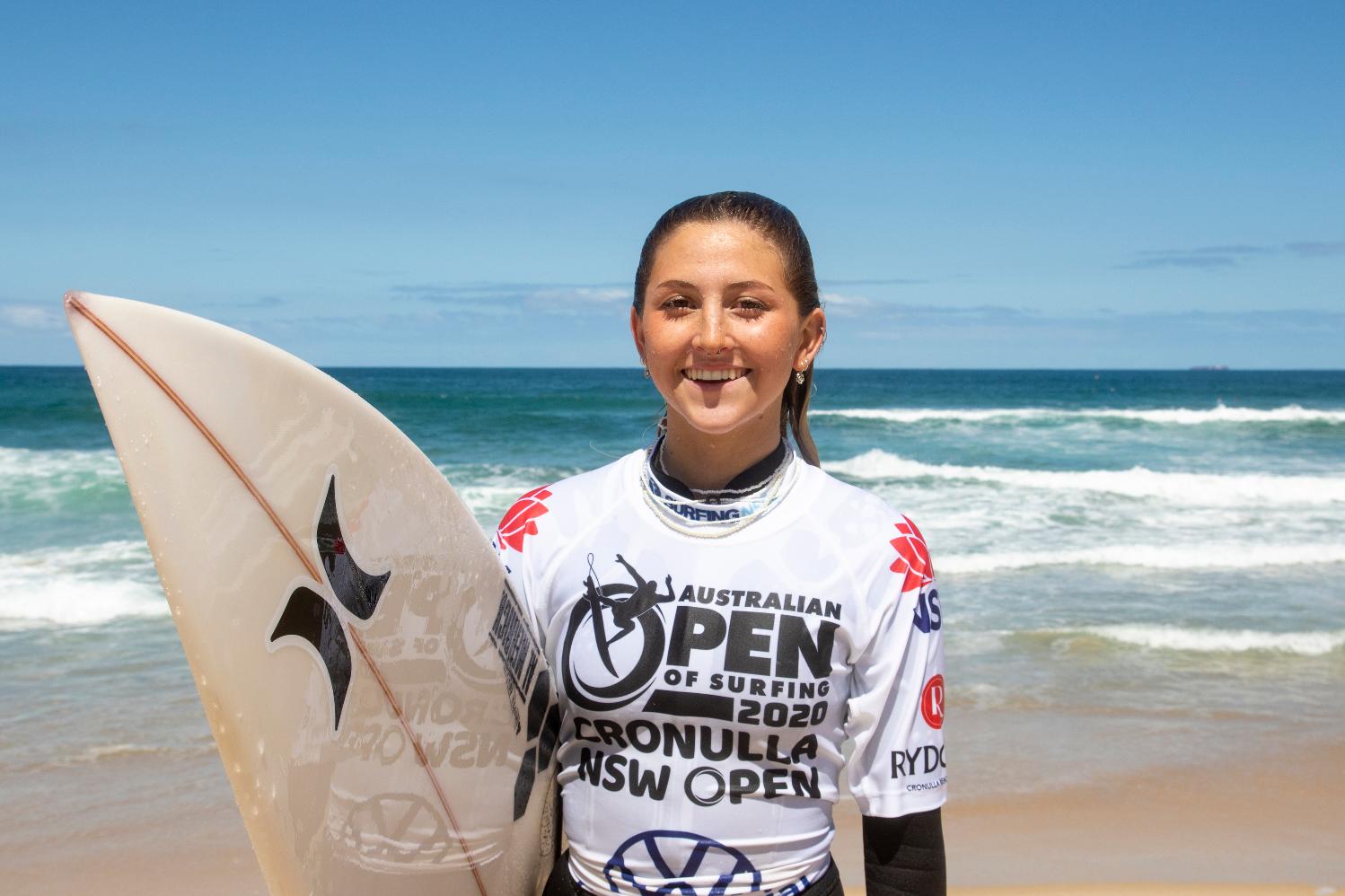
CRONULLA BEACH, SYDNEY
Monday, 9 November 2020
by Surfing NSW
Kalani Ball (Stanwell Park) and Cedar Leigh-Jones (Avalon) have taken top honours at the Volkswagen Cronulla Open, the first NSW stop on the 2020 Australian Open Surf series after an array of exciting heats in playful two-foot conditions.
Kalani Ball (Stanwell Park) capitalised on his opening day momentum taking out the Open Men’s division. The lightning-fast natural footer shone over the entirety of the event, eliminating top seed and fellow Scarborough Boardriders member Nic Squires (Corrimal) in his opening heat and then backed it up with massive scores in his following heats. Ball finished the final with a gigantic 18.04 two-wave heat total to sneak ahead of event standout Dylan Moffat (Narrabeen) in the dying moments of the heat.
“This is the first event I’ve done this year so to get the win feels awesome,” said Ball. “I think the win ahead of Nic yesterday helped give me the confidence to keep getting through heats. That final came right down to the wire but I knew I had to get those rare waves that would dish up two steep sections. I’m stoked I found them.”
Cedar Leigh-Jones (Avalon) surfed a smart heat en route to her victory, striking in the final minute of the heat with an 8.33 to get the jump on Sarah Baum (Wallsend) who held down the lead for a giant portion of the final. The 16-year-old natural-footer nailed an array of beautiful snaps and carves to claim the win ahead of some fancied opposition.
“I’m so stoked to have won this, especially against some of the girls in this final,” said Leigh-Jones. “I look up to all the girls in the final so much, so to get a win against them feels incredible. It was quite hard to find a good wave out there, but my whole game plan was to just find the best wave I possibly could and hope it would link right through to the inside shorebreak.”
On Tuesday, November 10, it was announced the Australian Open of Surfing series will now welcome events in Port Macquarie and the far south NSW coast as the NSW Government’s tourism and major events agency, Destination NSW, comes on board as a new partner for the series of events.
The series which will now feature eight events that will take place in the latter months of 2020 and provide professional and aspiring surfers with the opportunity to win prize money and gain momentum going into 2021.
The event in Port Macquarie will be the first Surfing NSW event hosted there in close to five years, while the Far South Coast Open will be the first Surfing NSW event in close to a decade.
NSW Minister for Jobs, Investment, Tourism and Western Sydney Stuart Ayres said the NSW Government was proud to support the series giving a much-needed boost to local hotels, restaurants and attractions, including in areas affected by the summer bushfires.
“Our support for the Australian Open of Surfing has helped Surfing NSW expand the 2020 Series to secure two additional events for regional NSW – the Port Macquarie Open this weekend and the Far South Coast Open in December,” Mr Ayres said.
Program Helps Skill Up School Leavers Over Summer
The NSW Government's Skilling for Recovery program offers fee-free training places for school leavers, young people and job seekers.
Hundreds of fee-free training courses are now available for school leavers, young people and job seekers, as part of the NSW Government’s Skilling for Recovery initiative.
Premier Gladys Berejiklian said the courses came from the $320 million committed to delivering 100,000 fee-free training places across the state.
“There are more than 100,000 fee-free training places available for people in NSW as the workforce looks to reskill, retrain and redeploy in a post-COVID-19 economy,” Ms Berejiklian said.
“It doesn’t matter if you are a school leaver or looking for a new career path, I encourage everyone impacted by the pandemic to see what training options are available to them.”
Minister for Skills and Tertiary Education Geoff Lee said enrolments were now open for in-demand skills leading to career pathways in areas such as aged care, nursing, trades, IT, community services, logistics and accounting.
“We are not training for the sake of training, we are training for real jobs with real futures and equipping the people of NSW with the skills they need to thrive in a post-pandemic economy,” Mr Lee said.
“There are hundreds of providers right around NSW who are ready to deliver this important training.”
As part of this Skilling for Recovery initiative, school leavers have the unique opportunity to experience a range of skills to find out what suits their passions using the Summer Skills program.
Minister for Education Sarah Mitchell said some Year 12 school leavers were still deciding what they wanted to do next.
“In designing the Summer Skills program, the NSW Government has ensured the training on offer is aligned to local industry needs,” Ms Mitchell said.
“We need to provide opportunities that help the 2020 Year 12 school leaver cohort to find their feet during these uncertain times. That’s why we’re delivering practical, bite-sized and fee-free training opportunities this summer.”
The Summer Skills offered will cover a range of industries including agriculture, construction, conservation, fitness, engineering, coding, communication and digital literacy.
You can find further details of the courses on offer as part of Skilling for Recovery and the Department of Education Summer Skills program on the respective websites.
83% of Australians want tougher privacy laws. Now’s your chance to tell the government what you want

Federal Attorney-General Christian Porter has called for submissions to the long-awaited review of the federal Privacy Act 1988.
This is the first wide-ranging review of privacy laws since the Australian Law Reform Commission produced a landmark report in 2008.
Australia has in the past often hesitated to adopt a strong privacy framework. The new review, however, provides an opportunity to improve data protection rules to an internationally competitive standard.
Here are some of the ideas proposed — and what’s at stake if we get this wrong.
Read more: It's time for privacy invasion to be a legal wrong
Australians Care Deeply About Data Privacy
Personal information has never had a more central role in our society and economy, and the government has a strong mandate to update Australia’s framework for the protection of personal information.
In the Australian Privacy Commissioner’s 2020 survey, 83% of Australians said they’d like the government to do more to protect the privacy of their data.
The intense debate about the COVIDSafe app earlier this year also shows Australians care deeply about their private information, even in a time of crisis.
Privacy laws and enforcement can hardly keep up with the ever-increasing digitalisation of our lives. Data-driven innovation provides valuable services that many of us use and enjoy. However, the government’s issues paper notes:
As Australians spend more of their time online, and new technologies emerge, such as artificial intelligence, more personal information about individuals is being captured and processed, raising questions as to whether Australian privacy law is fit for purpose.
The pandemic has accelerated the existing trend towards digitalisation and created a range of new privacy issues including working or studying at home, and the use of personal data in contact tracing.
Australians are rightly concerned they are losing control over their personal data.
So there’s no question the government’s review is sorely needed.
Issues Of Concern For The New Privacy Review
The government’s review follows the Australian Competition and Consumer Commission’s Digital Platforms Inquiry, which found that some data practices of digital platforms are unfair and undermine consumer trust. We rely heavily on digital platforms such as Google and Facebook for information, entertainment and engagement with the world around us.
Our interactions with these platforms leave countless digital traces that allow us to be profiled and tracked for profit. The Australian Competition and Consumer Commission (ACCC) found that the digital platforms make it hard for consumers to resist these practices and to make free and informed decisions regarding the collection, use and disclosure of their personal data.
The government has committed to implement most of the ACCC’s recommendations for stronger privacy laws to give us greater consumer control.
However, the reforms must go further. The review also provides an opportunity to address some long-standing weaknesses of Australia’s privacy regime.
The government’s issues paper, released to inform the review, identified several areas of particular concern. These include:
the scope of application of the Privacy Act, in particular the definition of “personal information” and current private sector exemptions
whether the Privacy Act provides an effective framework for promoting good privacy practices
whether individuals should have a direct right to sue for a breach of privacy obligations under the Privacy Act
whether a statutory tort for serious invasions of privacy should be introduced into Australian law, allowing Australians to go to court if their privacy is invaded
whether the enforcement powers of the Privacy Commissioner should be strengthened.
While most recent attention relates to improving consumer choice and control over their personal data, the review also brings back onto the agenda some never-implemented recommendations from the Australian Law Reform Commission’s 2008 review.
These include introducing a statutory tort for serious invasions of privacy, and extending the coverage of the Privacy Act.
Exemptions For Small Business And Political Parties Should Be Reviewed
The Privacy Act currently contains several exemptions that limit its scope. The two most contentious exemptions have the effect that political parties and most business organisations need not comply with the general data protection standards under the Act.
The small business exemption is intended to reduce red tape for small operators. However, largely unknown to the Australian public, it means the vast majority of Australian businesses are not legally obliged to comply with standards for fair and safe handling of personal information.
Procedures for compulsory venue check-ins under COVID health regulations are just one recent illustration of why this is a problem. Some people have raised concerns that customers’ contact-tracing data, in particular collected via QR codes, may be exploited by marketing companies for targeted advertising.

Under current privacy laws, cafe and restaurant operators are generally exempt from complying with privacy obligations to undertake due diligence checks on third-party providers used to collect customers’ data.
The political exemption is another area of need of reform. As the Facebook/Cambridge Analytica scandal showed, political campaigning is becoming increasingly tech-driven.
However, Australian political parties are exempt from complying with the Privacy Act and anti-spam legislation. This means voters cannot effectively protect themselves against data harvesting for political purposes and micro-targeting in election campaigns through unsolicited text messages.
There is a good case for arguing political parties and candidates should be subject to the same rules as other organisations. It’s what most Australians would like and, in fact, wrongly believe is already in place.
Read more: How political parties legally harvest your data and use it to bombard you with election spam
Trust Drives Innovation
Trust in digital technologies is undermined when data practices come across as opaque, creepy or unsafe.
There is increasing recognition that data protection drives innovation and adoption of modern applications, rather than impedes it.

The COVIDSafe app is a good example. When that app was debated, the government accepted that robust privacy protections were necessary to achieve a strong uptake by the community.
We would all benefit if the government saw that this same principle applies to other areas of society where our precious data is collected.
Information on how to make a submission to the federal government review of the Privacy Act 1988 can be found here.
Read more: People want data privacy but don't always know what they're getting ![]()
Normann Witzleb, Associate Professor in Law, Monash University
This article is republished from The Conversation under a Creative Commons license. Read the original article.
Everything You’ve Ever Wanted To Know About Frogs
The NSW Department of Planning, Industry and Environment published a great page this week for FrogId Week, which shares all kinds of information about frogs. As we live in an area where so many of us hear all kinds of frogs of an evening, and so many of us like watching tadpoles turn into things that can jump, or finding out more about our local frogs, such as the Peron's Tree Frog we found in the yard here a little while ago, this information may be something that interests you.
The Department put the call out on Twitter for your frog-related questions and brought in one of NSW National Parks and Wildlife Service’s frog experts, ecologist Joanne Ocock, to answer them. If you missed their live Twitter Q and A, fear not, they’ve pulled together their favourite questions (and answers) below.
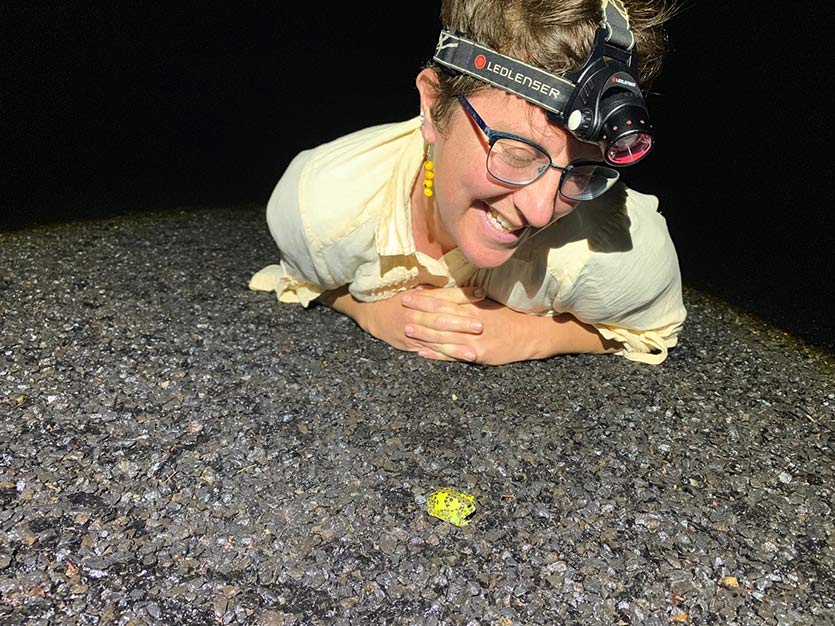
This is Ecologist Joanne Ocock taking a frog selfie. Photo: Joanne Ocock
How do I identify the frogs in my backyard?
The best way is to use the FrogID app from the Australian Museum. You don’t have to see the frog, just record the calling noises with the app, submit it and the experts will let you know what you have! It’s quite addictive.
What kinds of things can I do to invite more frogs into my backyard?
Great idea! Firstly, don’t use too many chemicals in your garden. Build ‘frog ponds’; shallow pools with slope-y sides and a variety of vegetation in and around it and include some rocks and crevices for the frogs to hide if possible. Make sure you keep any curious pets at bay.
How long can a frog live without water?
Not all frogs are the same. Some lose water through their skin very easily, so will dry out quickly if they do not move or shelter somewhere that stops the evaporation, such as a damp place out of the wind. Other species, like the green tree frog can stay away from water for longer because their skin has some properties that make them more resistant to water loss. Other species are a bit extreme and burrow underground then make a cocoon with their skin to reduce their water loss! They essentially go into stasis, an extreme version of hibernation, and can stay down there for up to two years. Once they sense the rain above ground, they dig their way back up again.
How long do frogs live for?
It’s actually not very well known for most species in the wild. We do know that green tree frogs (Litoria caerulea) can live for over 30 years in captivity.
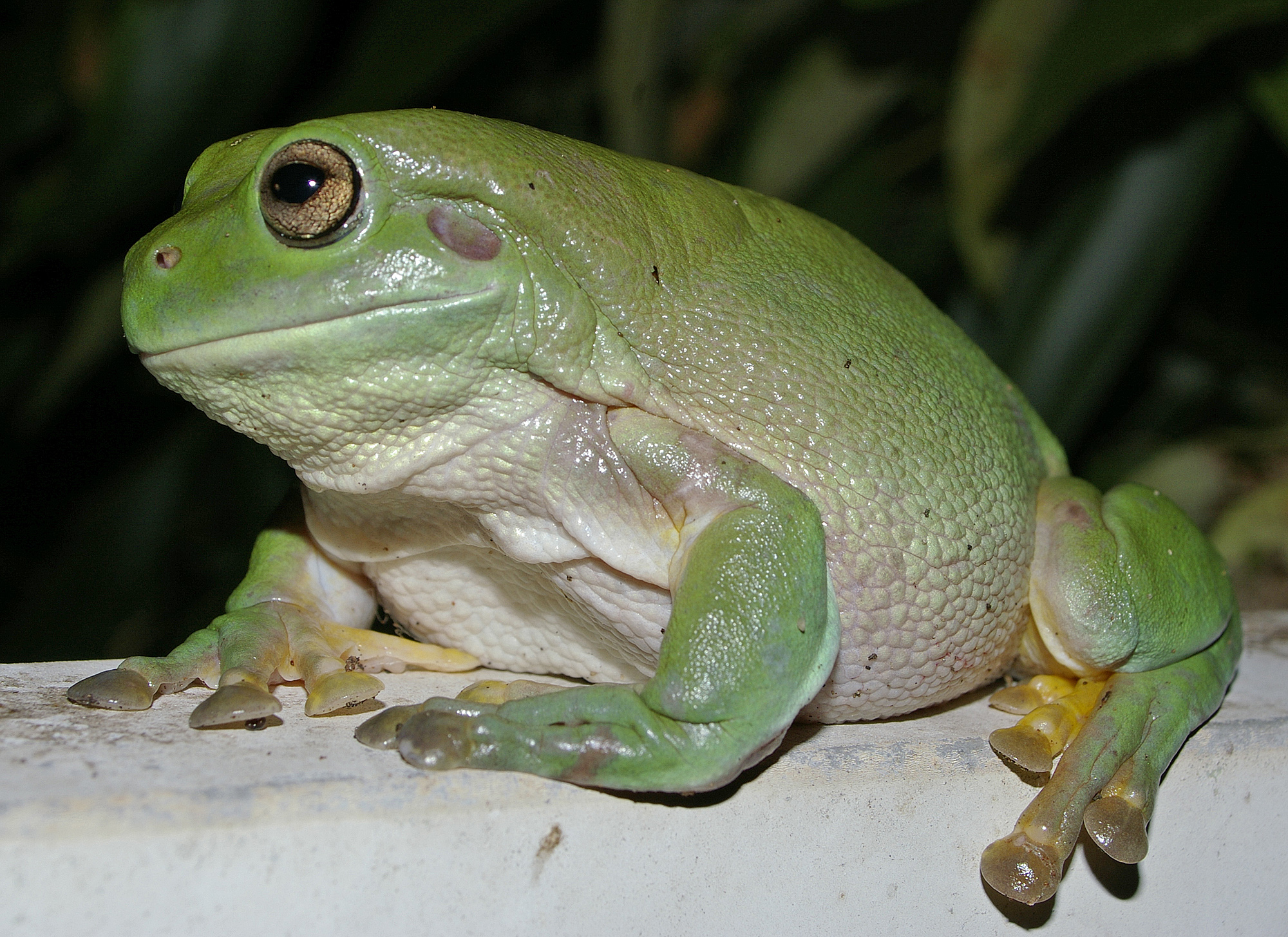
Green tree frog (Litoria caerulea) - photo by Bidgee
Are there any species of frogs unique to NSW?
There are 85 species found in NSW, and approximately 12 are only found in NSW. New species are being determined still, such as Mahoney’s toadlet (Uperoleia mahoney) and Litoria watsonia.
What makes a frog a frog and a toad a toad?
‘Toad’ is a name we tend to give some frogs that look more warty, upright and tend to have shorter, stubbier legs with short hops. But it’s not very precise or uniformly applied. In taxonomic classification, ‘frog’ is actually the name of the higher level (Order), and the ‘true toads’ are a Family within that Order. So, all toads are really frogs!
Should people pick up frogs for selfies?
No! if you're not wearing gloves you may pass on any bacteria or germs that are on your hands to the frog, as they absorb things through their skin. If you really want that selfie photo, choose a frog that is in a clear, safe spot, keep a safe distance and smile!
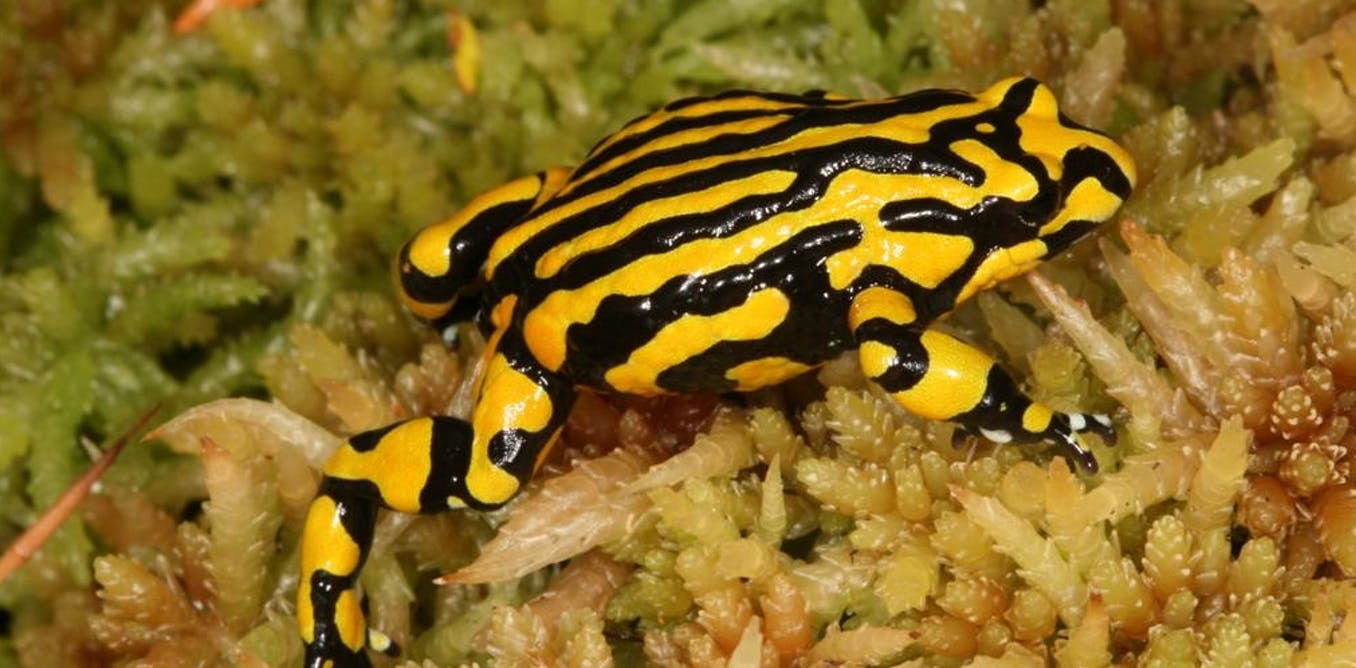
Southern Corroboree frog (Pseudophryne corroboree) - photo by Michael McFadden, supervisor of Herpetofauna at Taronga Conservation Society
What’s the best way to spot frogs?
Start by bringing a friend, as it can be easier to track down where a frog is calling from if two sets of eyes are looking. You’ll also need a torch so you can use both hands to search any vegetation. Sometimes frogs are easily spotted on places like windows when the light is on, or toilet blocks (if you’re somewhere west of the divide). Other times it can be tricky, as sometimes the frog making the big noise is actually quite small and can be well hidden. So you’ll also need patience. Remember not to pick up the frog if you’re not wearing gloves, and if you need that photo then don’t interfere with the frog and take it quickly!
How are frog populations currently tracking?
We are seeing improvements in our understanding of why some frog species are declining, for example identifying the disease or virus that causes mortality, pesticide use or the loss of important habitat. Some species do seem to be doing better, such as some populations of the southern bell frog (Litoria raniformis) in areas of NSW. And some populations are recovering after being infected with the chytrid fungus. But loss of habitat and climate change continues to make frogs more vulnerable.
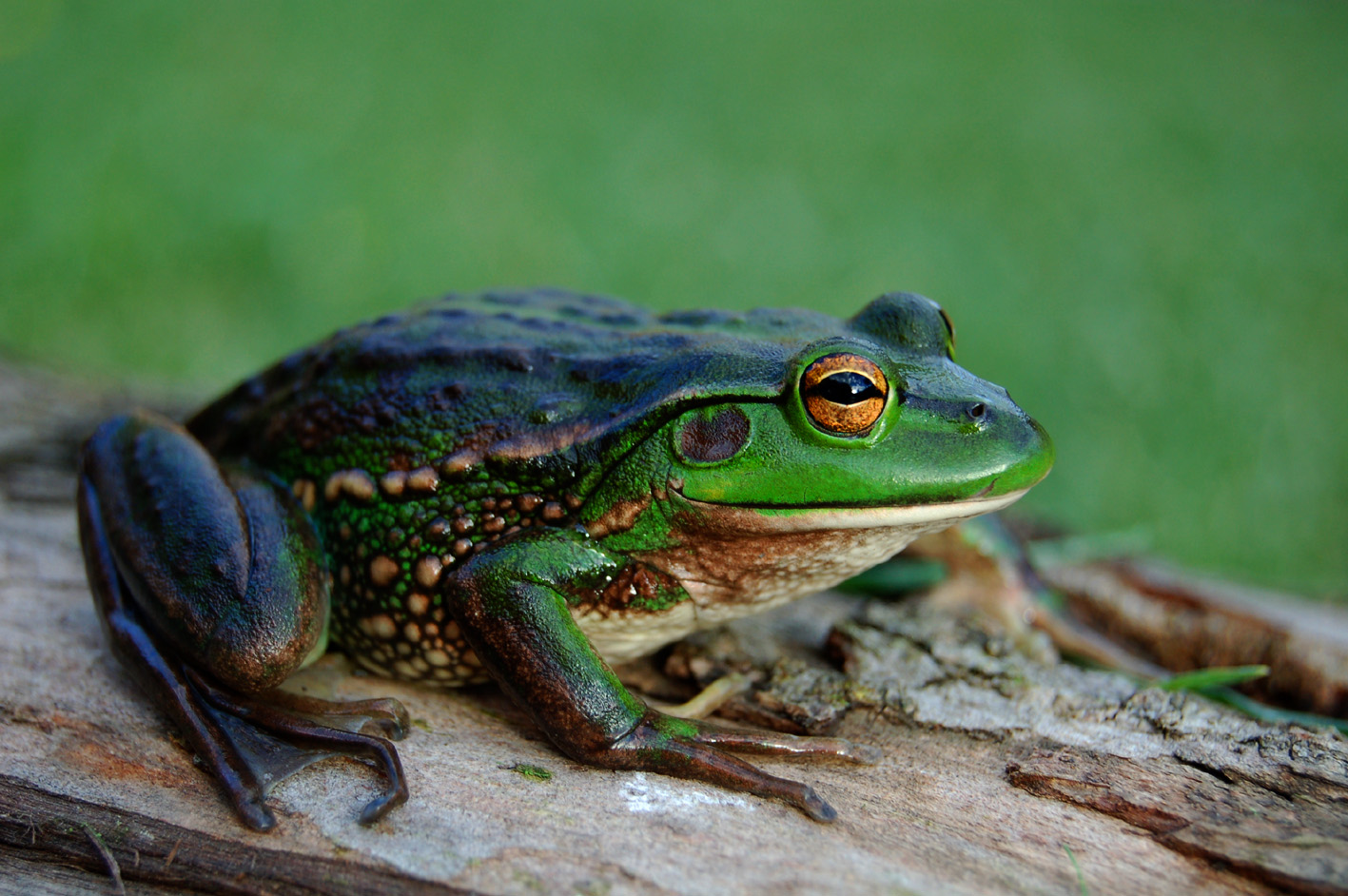
Southern bell frog (Litoria raniformis) - photo by Tereza T
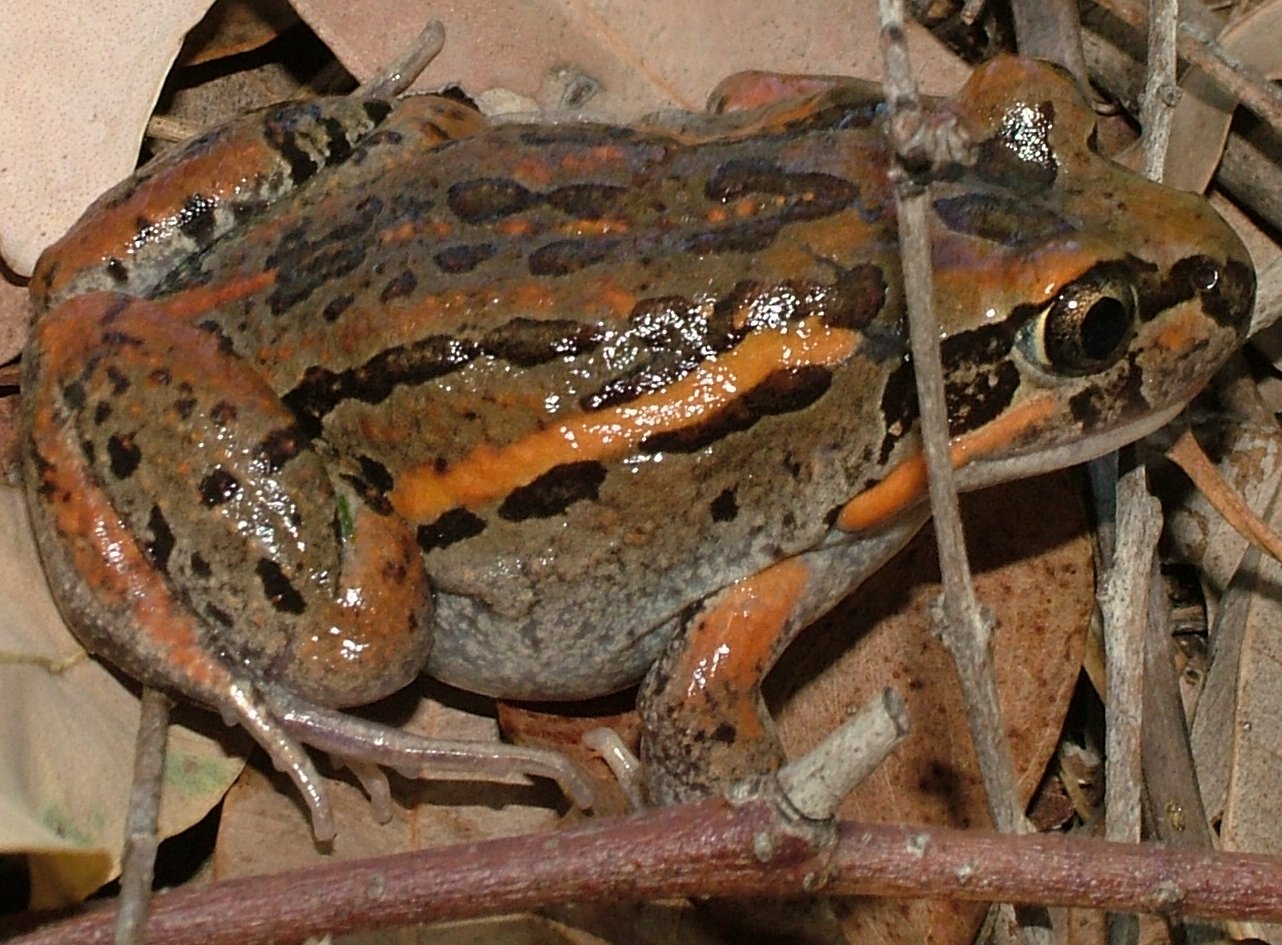
Salmon-striped frog (Limnodynastes salmini) - photo by Donna Flynn
Are there pink frogs?
The turtle frog, found only around Perth, WA is a pink frog. There is also the salmon-striped frog, found across eastern NSW. It’s mostly brown but has bright pink racing stripes!
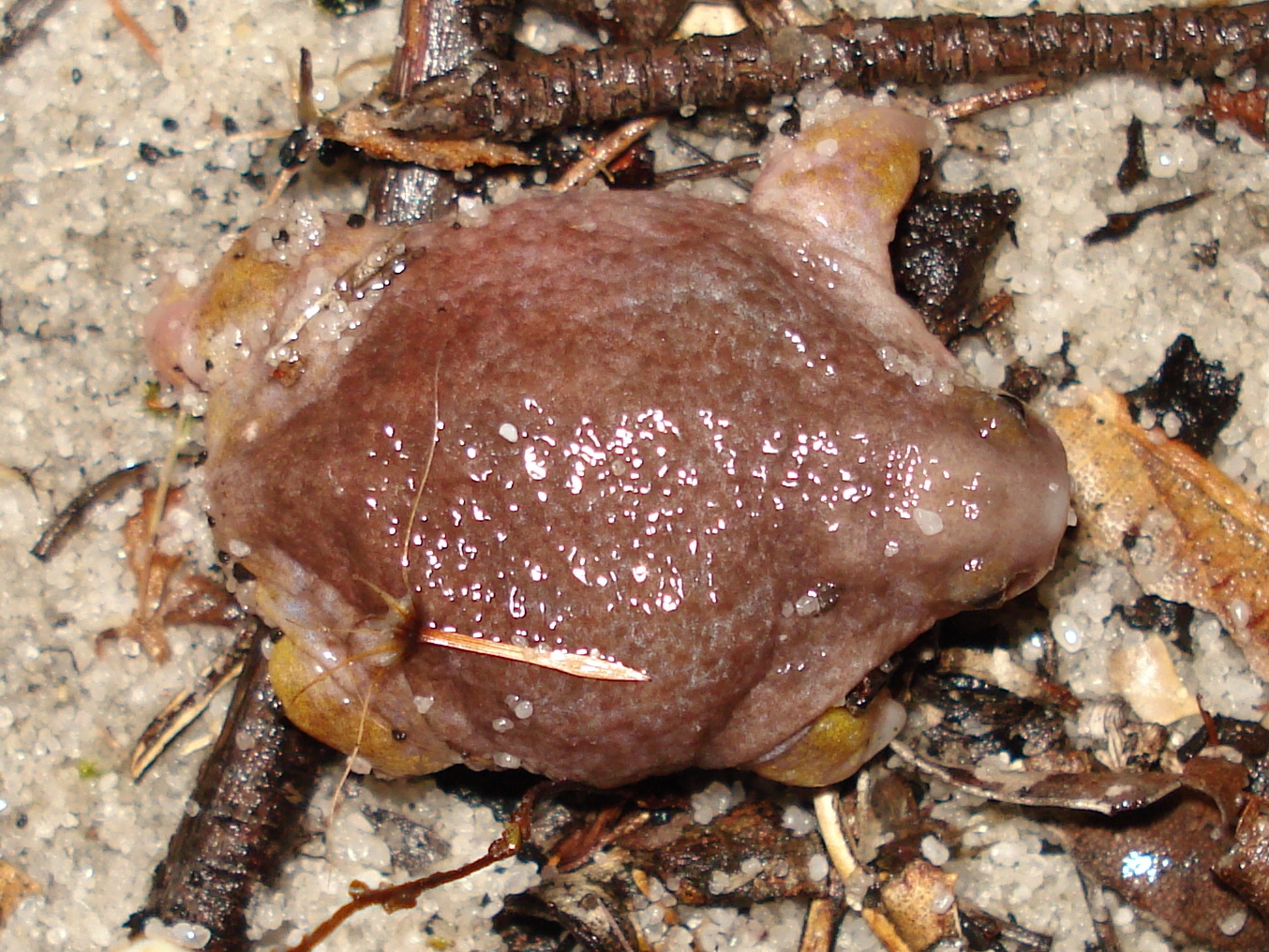
Turtle frog (Myobatrachus gouldii) - photo by Paul J. Morris
How many different coloured frogs are there?
Frogs can come in quite a few different colours. Green is the colour that most people think of, but frogs come in all shades of green, as well as red, blue, purple and yellows. One of the most colourful frogs in Australia is the crucifix frog, which happens to be one of my favourite species.
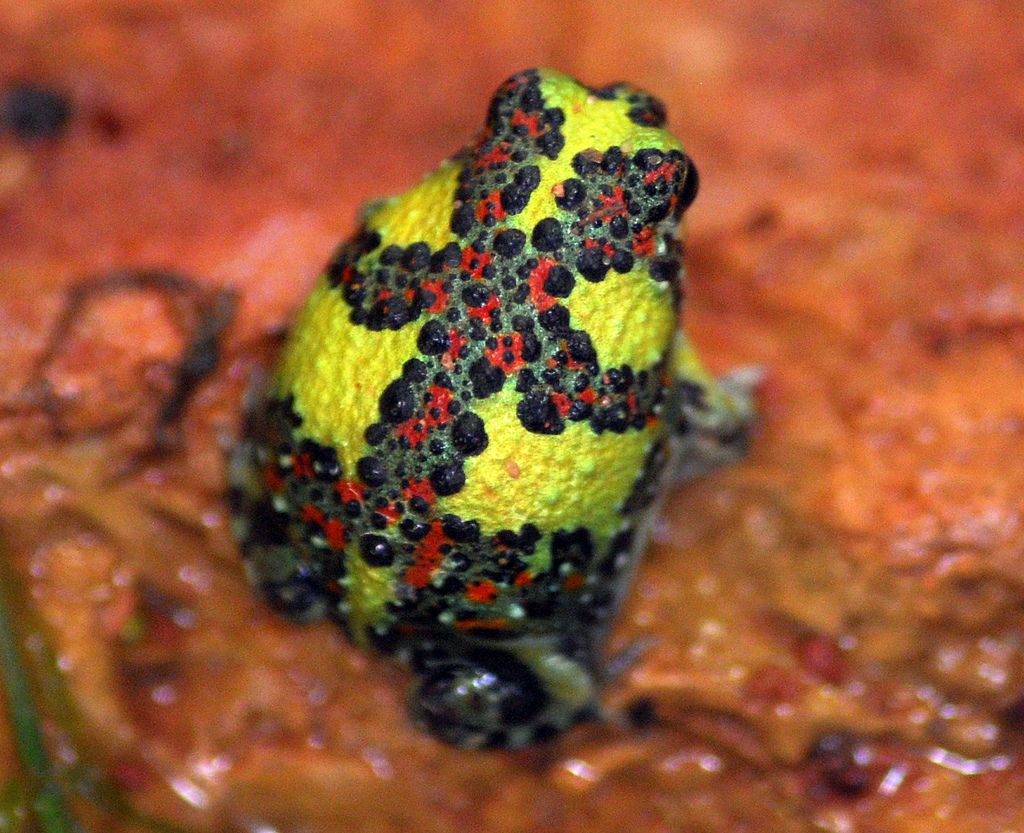
Crucifix frog (Notaden bennettii) - native to western New South Wales and south-western Queensland - photo sourced from Pin interest
What's the latest on the impacts of recent bush fires on frog populations in Eastern Australia? Are there signs of resilience and recovery?
Unfortunately, it’s too early to tell for sure, but it’s potentially not as bad as first feared. Frog calls submitted to FrogID (Australian Museum’s national citizen scientist frog-monitoring project) recorded all species heard before the fires, and again after the fires in burnt areas, including rare species, which is encouraging. It may be that these frogs are more resilient to fire than we thought, and were able to hide in good, damp spots. It also may have been that the fires weren’t as severe in all frog-populated areas, so once the rains came the frogs came out. In the longer-term, we’ll need to continue monitoring these populations to make sure they’re breeding successfully and continue to survive.
Where can I go to learn more about frogs in NSW?
The Department of Planning, Industry and Environment frog page is a great place to start!
How To Navigate Using The Stars
Over 50 Artists Join Great Southern Nights Music Event
- Blue Mountains
- Central Coast
- Country NSW
- Hunter
- North Coast
- Outback NSW
- South Coast
- Sydney.
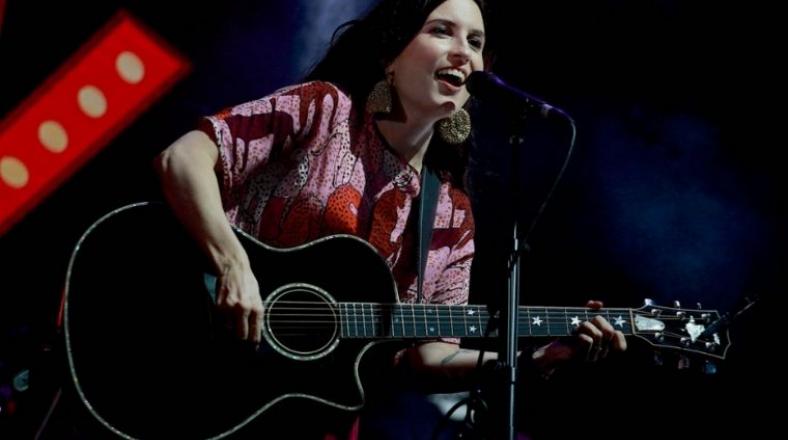
A third of our waste comes from buildings. This one's designed for reuse and cuts emissions by 88%
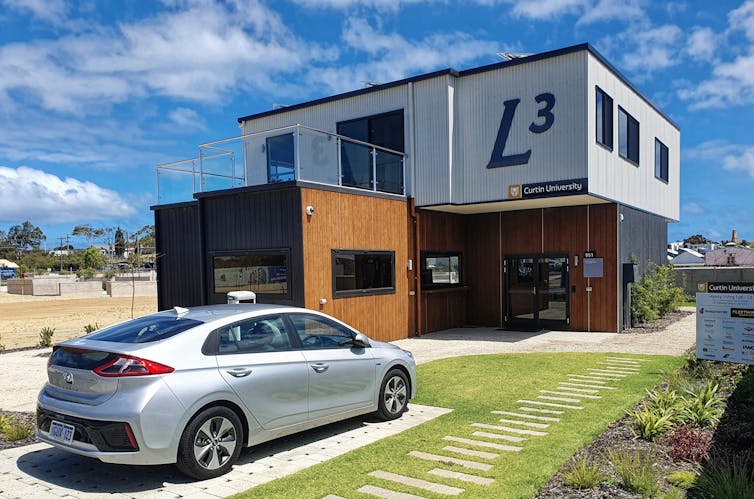
Designing buildings so they can easily be taken apart and the materials reused provides a feasible and commercial pathway for minimising waste and greenhouse gas emissions. Our research shows one such Curtin University building, the Legacy Living Lab in Fremantle, reduces construction waste and cuts emissions to almost a tenth of what a conventional building process would produce.
The modular, circular economy building produces benefits in all six environmental indicators we assessed. It’s part of our vision for the decarbonisation of buildings.
Learning From Nature
Natural biogeochemical cycles create little or no waste. These circular cycles eventually transform used material into a new resource. For example, through the nutrient cycle a fallen leaf provides the building blocks for future leaves.
It’s simple and beautiful. The opposite of a linear model of “take, make, dispose”. It’s complex and ugly.
Unfortunately, this is the model industrialised society has adopted. And not only for our coffee pods, which mostly end up in landfill, but also for most commercial and residential buildings.
The building industry consumes about 50% of mineral resources and produces about 35% of waste. It’s a major source of global greenhouse gas emissions. What, then, can be done?

Read more: We create 20m tons of construction industry waste each year. Here's how to stop it going to landfill
Rethinking ‘Downward Spiral’ Recycling
The answer lies in revisiting the basics of our recycling practices. Since the late 1990s, recycling has been considered an environmental solution, with recycling bins popping up everywhere. However, researchers and consumers alike have begun to realise recycling often comes down to mere “wishcycling”. Less than 10% of plastics is actually being recycled.
Reprocessing is considered the best way to keep materials in use, particularly for artefacts like coffee cups or microchips. However, for many other products, such as building materials, recycling often translates into less than helpful down-cycling.
Even seemingly environmentally benign material, such as timber, often cannot be recycled. Rather, it is remanufactured into products of lower economic value and quality. The material is in a downward spiral that only delays its disposal to landfill.
Clearly, it is much better for the environment if we can find ways to reuse products. Indeed, there are “reusable alternatives for almost everything: beeswax or silicone food wraps, reusable coffee pods, shampoo and conditioner bars, reusable safety razors and bars of soap, rather than liquid soap”.
Read more: With the right tools, we can mine cities
Applying Reuse Principles To Buildings
Can this reuse practice be adopted for buildings too? After all, a building is a sophisticated and complex product compared to coffee pods or cling wrap.
Researchers from Curtin University Sustainability Policy (CUSP) Institute put this question to the test by building a modular, reusable laboratory. It’s a place where researchers, builders and citizens alike can meet to prototype and study new products.
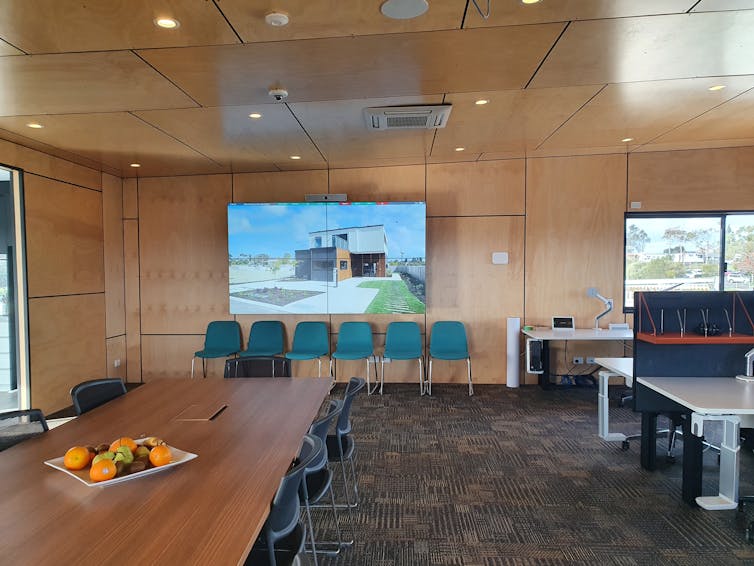
The Legacy Living Lab (L3) is a highly functional, state-of-the-art building with offices and space for collaboration. Yet it can be taken apart – deconstructed or disassembled – moved and reused anywhere within weeks.
Findings from studying the environmental impact of this facility point towards a resounding yes to the question of whether reuse practices can be adopted for buildings. The in-built reuse practices of the L3 save 18 tonnes of construction materials from disposal compared to common building industry practices. This leads to an 88% decrease in greenhouse gas emissions.
So how was this done? Simply, by choosing reused steel frames, opting for steel foundations instead of concrete, and designing internal wall cladding that’s easily disassembled. This makes it almost as easy to take the building apart as your average Lego spaceship.
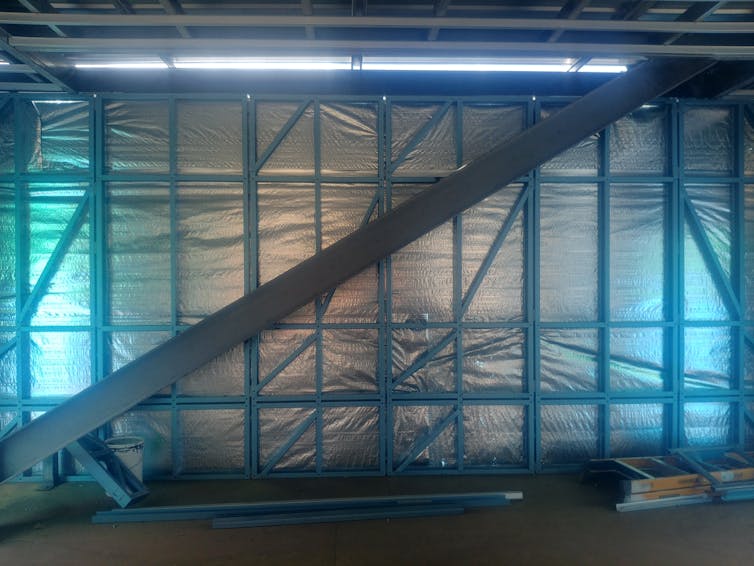
Read more: Green cement a step closer to being a game-changer for construction emissions
When the time comes to decommission the building, it can be deconstructed as eight modules. These can be moved to the next site for reuse rather than being demolished.
Modular buildings are made of box-shaped structures, built off-site and delivered on-site in a matter of hours. This has the added benefit of minimum disruption for our cities compared to traditional construction sites.
Modular buildings come in all shapes and dimensions, from tiny houses to skyscrapers and factories. They are often more cost-effective to produce than traditional double-brick constructions.
Thus, as well as a minimal environmental footprint, the advantages of modular buildings include flexibility, speed and cost.
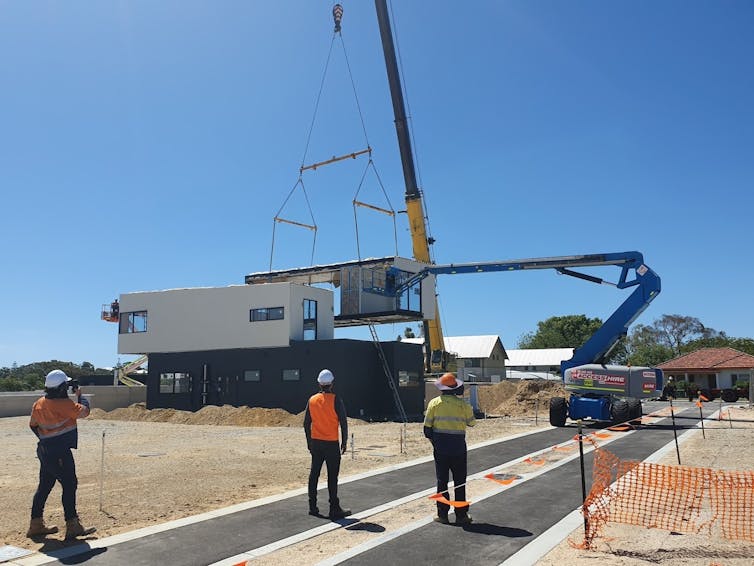
Creating A New Building Materials Market
By adopting easily disassembled modular buildings, we can create a whole new market for reusable building materials. Design-for-disassembly and closed-loop supply chains can keep building components in the material loop as they are – without the need for wishy-washy and wasteful recycling procedures.
Similar to the way nature operates, the team at CUSP created a building whose byproducts from one process remain in the loop as inputs for the next, keeping waste to a minimum. In this way, disassembly becomes much safer and cleaner, which benefits our cities and their residents.
Read more: Unbuilding cities as high-rises reach their use-by date
All that does not mean recycling building waste isn’t beneficial. It all depends on the project. Timber can at least be chipped into garden mulch, bricks and concrete crushed into road base, and so forth.
But this approach is not nearly as neat as nature’s way of handling waste. Design for disassembly and modularity comes closer to that. It can lead the way towards a marketplace where it is common practice to retain material in the supply chain.
If our goal is to create products and processes that “solve our greatest design challenges sustainably and in solidarity with all life on Earth”, it’s time we turned toward nature. We believe it will be a wiser guide than any other in our efforts to redefine wasteful, linear business models.![]()
Roberto Minunno, Research Fellow in Sustainability Buildings, Curtin University; Greg Morrison, Professor and Director, Curtin University Sustainability Policy Institute, Curtin University; Richard L. Gruner, Senior lecturer, University of Western Australia, and Timothy Michael O'Grady, PhD researcher, Curtin University
This article is republished from The Conversation under a Creative Commons license. Read the original article.
Friday essay: in praise of pardalotes, unique birds living in a damaged country
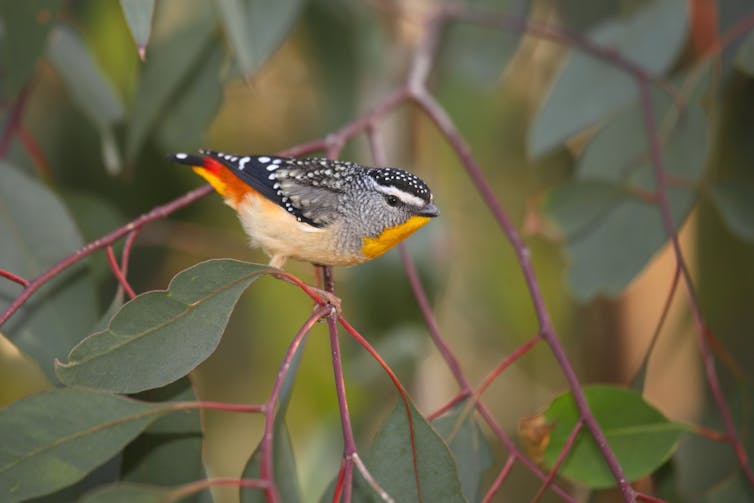
I’ve spent more of my life with pardalotes than with most other acquaintances. They are an obscure and odd group of four species of small (thumb-sized) birds. They have little public profile, not helped by the awkward name. But they are quintessentially Australian, occurring nowhere else in the world.
As a boy, I chanced upon a pair of spotted pardalotes absorbed in constructing their nesting burrow, a long tunnel built into sloping earth. Whereas most of the bird’s existence is spent unobtrusively foraging in tree canopies, breeding brings this species to ground, allowing close observation by the quiet but inquisitive.
My interest was piqued by their industry, beauty and strangeness. The intrigue stayed with me. Later, a PhD in zoology gave me the opportunity to study them in detail.
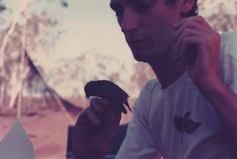
Zoology is a charmed science. Done well, it offers the opportunity to escape the conformity, constraints and solipsism of the human perspective; to see and understand the world from the viewpoint of another species, where space and time differ from the conventions we’re used to, where the ordering of the importance of things is upended, where the elements of the natural world come far more sharply into focus and are imbued with different meanings.
Zoology offers shapeshifting, and the insights that brings. It has taken me to many places, and a little into the diverse minds of remarkable species.
Adapted To Australia
So, for three years I counted pardalotes at many sites and over many seasons. I caught thousands, with wire-mesh traps at the entrances to their nesting burrows or with carefully sited nets. I attached leg bands, so I knew the identity of individuals. I weighed them, measured them, described the subtle variations in their jewelled plumage.
I watched them for hours every day, recording the plant species in which they foraged, and what they ate. I studied their mating habits, their breeding success, their territoriality and social interactions.
I reassessed my initial conception of them as placid when my experiments with a dummy pardalote and call playback triggered violent responses from territorial males. I examined the factors that threatened and killed them.
I found that they have long adapted to and exemplify an Australian ecology: they fit this country well.
They forage almost entirely in eucalypts, that linchpin and defining feature of many Australian environments. Their diet is unusual, comprising mostly the sweet exudate (manna) that seeps from eucalypt foliage, and “lerp”, the sugary coating of psyllid insects (a specialised group of bugs) that suck the phloem (the “sap” in leaves) from within that foliage.
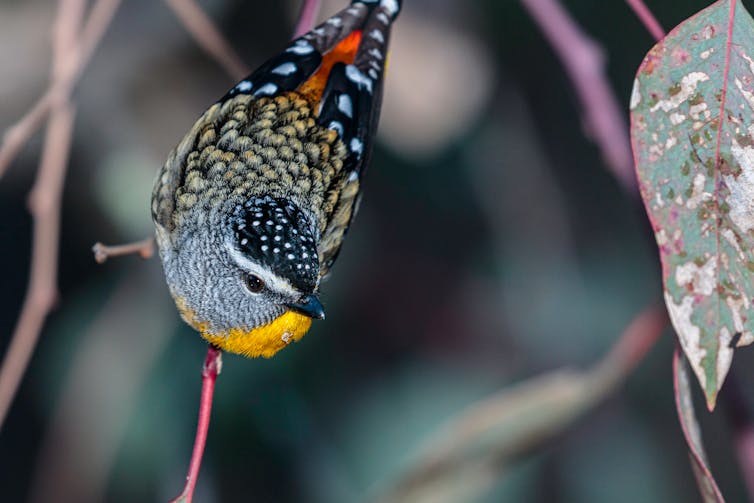
This strange resource is itself a consequence of the Australian environment – our soils are typically so poor that trees capturing nutrients must also drink up an excess of carbohydrates that they then need to secrete.
The eucalypt/lerp/pardalote web is an intricate arrangement, played out in kaleidoscopic variation in different regions, with varying eucalypt, psyllid and pardalote species.
Season adds a further dynamic to the landscape, with insect abundance diminishing in cooler areas in winter. So, like many other animal species, the pardalotes must track the ebb and flow of resources across our country, else stay put and starve.
Indeed, episodes of mass mortality of pardalotes have been recorded in some winters. Some populations of these tiny birds cross formidable Bass Strait each year, heading from Tasmanian summers to the mainland for winter. Others disperse in a less orderly manner, nomadically tracking more unpredictable booms and busts of psyllid populations.
Subverted Pathways
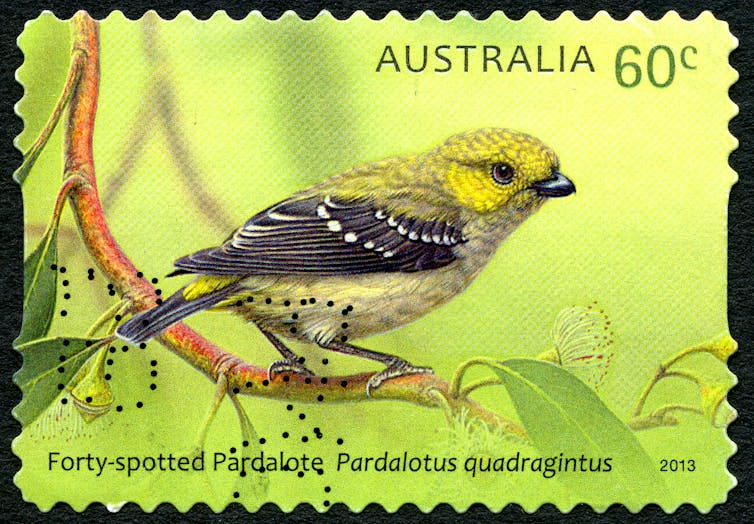
Such nomadic movement is a distinctive feature of many Australian birds, contrasting markedly with the more rigid migration routes typical of birds on other continents – our seasonal patterning is more subtle and complex. But the ageless dispersal pathways of pardalotes have been subverted.
Clearing has broken the continuity of the forests, rendering dispersal more hazardous. In little more than 200 years, about 40% of their forest home has been destroyed, directly causing a comparable proportional loss in their population size.
Pardalotes have other threats. Around 10% of their habitat was burned in the severe wildfires of 2019–20, with those fires most likely killing the birds directly, and leaving burned habitat unsuitable for their re-establishment for at least several years.
Read more: A season in hell: bushfires push at least 20 threatened species closer to extinction
In many parts of their range, the manner in which we have degraded and fragmented their forest and woodland habitat has benefitted a small suite of aggressive honeyeaters – the native noisy miner and bell miner – and these miners can kill pardalotes and exclude them from otherwise suitable habitat.
Ecology is a complex network with many interwoven threads, and manipulation of one thread can have many reverberating impacts. We play with those threads at our peril.
From a human perspective, our land is mostly familiar, comforting.
But studying any Australian animal almost always leads to a crystallisation, a deciphering, of the destabilising manner in which we’ve contorted the ecology of this place. Purposefully, incompetently or haphazardly, we have rearranged the ecology of this land to suit our needs, and in doing so have rubbed away much that was integral to the existence of many other species.
We are corroding our nature and will pass on to our descendants a land that is less healthy, less diverse, less wonderful.
Notwithstanding the less secure life most pardalotes now face, three pardalote species remain reasonably abundant and widespread. However, one species – the forty-spotted pardalote (a charming and apt name) – has been particularly hard-hit by the changes we have wrought to its environment.
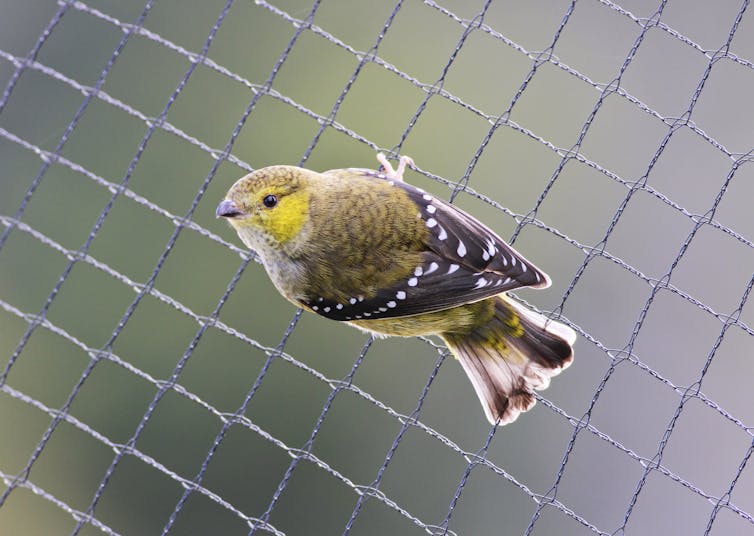
Now recognised as endangered, it has declined extensively and been reduced to a few populations (in beautiful locations) on some islands off Tasmania, with a fragile toehold at several small sites on the Tasmanian mainland. We still have the chance to save it, but that opportunity may soon be lost.
I no longer study pardalotes. But in the soundscape of my days, their intermittent call can still lure me away into lives that are not my own, into different ways of knowing our country and its workings, of the damage we’ve done and the healing we have yet to do.
This is an edited extract from Animals Make Us Human ed. Leah Kaminsky and Meg Keneally (Penguin Life, RRP $29.99), available now.![]()
John Woinarski, Professor (conservation biology), Charles Darwin University
This article is republished from The Conversation under a Creative Commons license. Read the original article.
Streeton: an optimistic celebration of the golden boy of Australian art
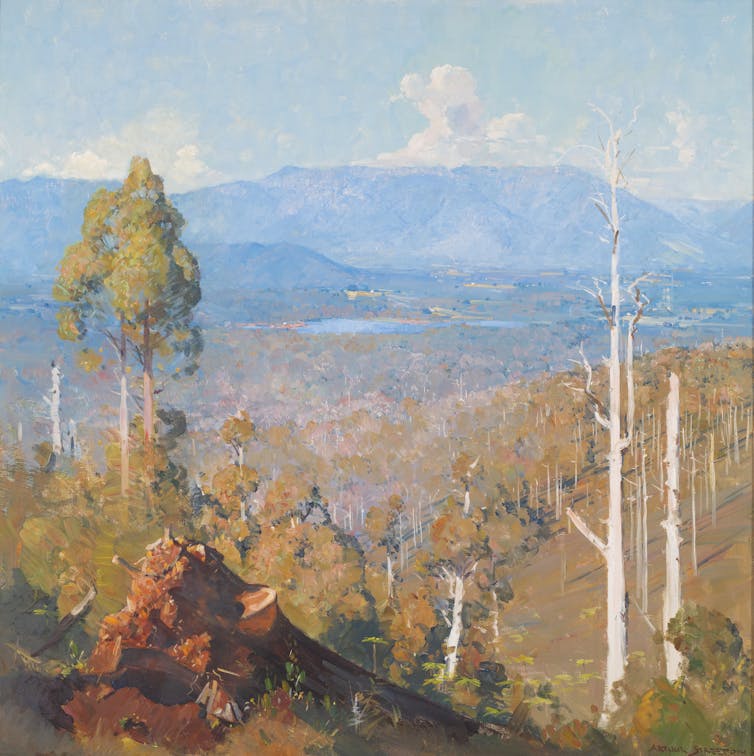
Review: Streeton, Art Gallery of New South Wales.
The Art Gallery of New South Wales has launched its summer season with a large, optimistic reconsideration of one of Australian art’s most favoured sons.
Curator Wayne Tunnicliffe has indicated that his decision to name the exhibition simply Streeton, without any subtitles, was part of his strategy to emphasise Streeton’s importance to Australian art and culture.
This assessment is hardly new. Lionel Lindsay, in The Art of Arthur Streeton of 1919 called him “our national painter”.
In 1923 when Streeton’s The Purple Noon’s Transparent Might was first exhibited in London, Lindsay wrote,
Streeton has painted the light and colour of Australia with such truth and beauty that his service to our country must ever remain the equivalent of Constable’s to England.

Six years later, in 1929, James S. MacDonald, the then director of the AGNSW, claimed Streeton
has shown us our land as no one else has done, and is still our best exemplar of the craft and mystery of painting as applied to landscape.
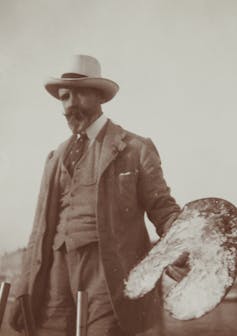
In 1931, as a way of lifting spirits in the Great Depression, the cash-strapped gallery gave Streeton the first ever survey exhibition of work by a living Australian artist.
In the years between the two world wars, Streeton’s characteristic paintings of blue tinged bush, golden fields, and clear Australian skies spoke of a country that had never seen war. His work was easily seen as characteristic of Australian smug insularity.
Most are pure landscapes but some show stocky soldier settlers attempting to tame the land by culling trees. Others show cattle grazing in newly cleared land. In The Land of the Golden Fleece (1926) a flock of sheep confidently graze in a valley sheltered by the Grampians.
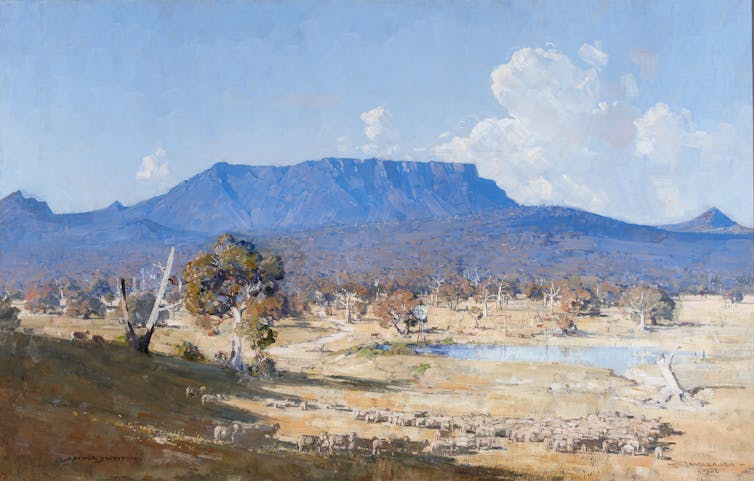
It is not surprising this painting so effectively encapsulates the sentiment of the conservative establishment: a label on the frame indicates it is the proud possession of one of Australia’s gentleman’s clubs.
Conservatives And Conservation
Streeton’s art is also a reminder that conservatives once cared about conservation. He was a passionate advocate for the need to conserve the Australian bush against the timber industry.
Silvan Dam of 1939 is a celebration of the tree clad landscape near his home in the Dandenongs. But in Silvan Dam and Donna Buang, AD 2000, painted the following year, the same subject becomes an apocalyptic vision condemning the then state government’s proposed logging of the forest. Stark, bleached, tree trunks stand against bare rock and denuded mountains.
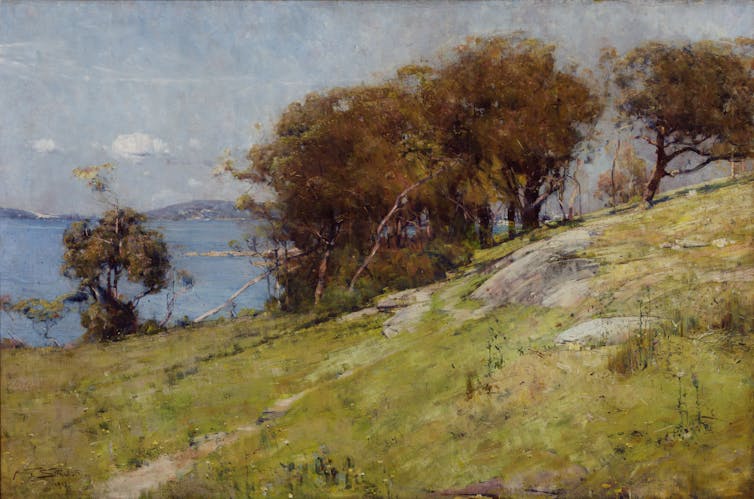
Streeton’s advocacy for nature over industry was not new. In 1895, when living in Sydney, he painted Cremorne Pastoral, an exquisite landscape of a grassy hill framed by graceful trees and Sydney Harbour as a political response to a proposed coal mine.
It is one of many harbour subjects painted in his Sydney years. As the AGNSW is directly opposite Sirius Cove, where Streeton lived in the 1890s, the bias towards this subject matter is understandable. The camp where Streeton, Roberts and others lived during the 1890s recession was built by the Brasch brothers who were active patrons of the arts.

Reuben Brasch supplied the artists with discarded varnished cedar panels from his department store. Their dark tones and elongated shape encouraged Streeton to become more experimental in his composition.
The colours of the harbour of his paintings in this period are almost dazzling in their intense blue of the water and gold of the Sydney sandstone, with flashes of gum tree green.
A further room shows his second Sydney period, after his return from spending some years in England. These are virtuoso pieces, but lack the experimental flair of the earlier works.
His paintings of Coogee Beach, a subject previously painted by Tom Roberts and Charles Conder, deserve a close look as a reminder of how Sydney’s magnificent beaches have been so degraded.
Lack Of Context
If there is one problem I have with this exhibition, and indeed with all celebrations of the life of a single artist, it is the lack of context. From the beginning, Streeton was praised simply because he was an Australian, born with a natural talent developed with little formal teaching.
But this is not quite true. While he attended evening classes with Frederick McCubbin at the National Gallery School in Melbourne, the young artist met the academically trained Tom Roberts and the sophisticated adventurer Charles Conder.
Streeton’s art developed during his relationship with these more experienced artists. He painted alongside them at Box Hill and Eaglemont. The exhibition includes his Settler’s Camp (1888), a less than successful homage to Tom Roberts’ The Artists’ Camp (1886). Streeton was, however, a fast learner, and by the time he participated in the 9 by 5 Impressions exhibition, was their equal.
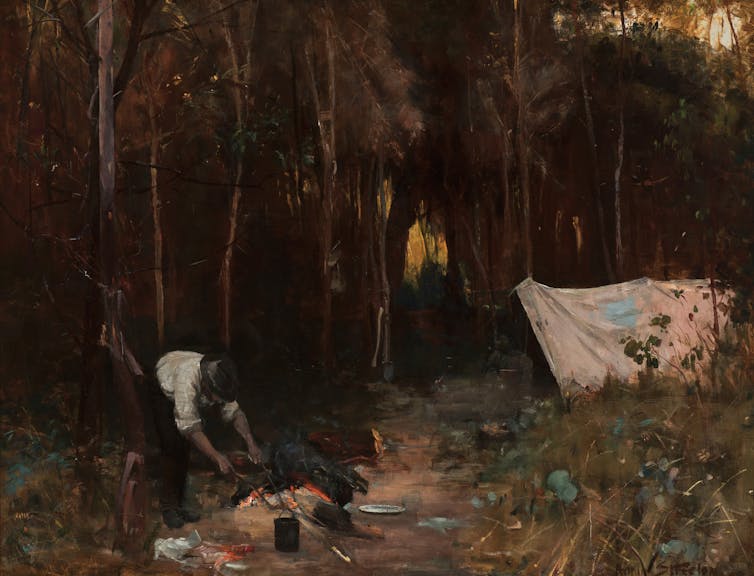
The wall of Streeton’s paintings from that most radical of all Australian art exhibitions is a joy. Conder’s influence can be seen in many of Streeton’s earlier paintings, especially in his Symbolist works and in The Railway Station, Redfern (1893), a painting that successfully quotes Departure of the Orient – Circular Quay (1888).
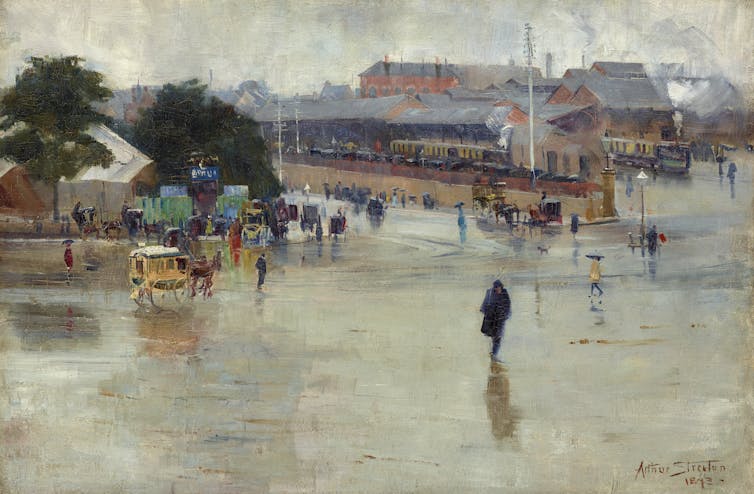
‘Smike’
The clearest indication of Streeton’s position in the early hierarchy of these brothers of the brush lies in the nickname bestowed on him by the dogmatic Roberts (aka “Bulldog”). Streeton was called “Smike”, after Nicholas Nickleby’s amiable but feeble-minded acolyte.
Arthur Streeton’s later career serves as a repudiation of that assessment. Travel broadened his perspective. He relished the exoticism of Egypt, where magical architecture took the place of gum trees. After initially being intimidated by the sophistication, class system and muted light of England, he did eventually achieve modest success in the centre of the empire.
At the end of World War I, he returned to Australia for real fame and fortune. In 1937, he became the only one of the artists who painted at Heidelberg to be honoured with a knighthood.
The last Arthur Streeton exhibition, curated by Geoffrey Smith for the National Gallery of Victoria in 1995, was shown in other state galleries. This much larger exhibition will not travel.
It is, however, on view throughout summer until February 14 2021. It is well worth the effort of an interstate trip for those newly liberated from quarantine.![]()
Joanna Mendelssohn, Principal Fellow (Hon), Victorian College of the Arts, University of Melbourne. Editor in Chief, Design and Art of Australia Online, University of Melbourne
This article is republished from The Conversation under a Creative Commons license. Read the original article.
This super rare squid is a deep-sea mystery. We recently spotted not 1, but 5, in the Great Australian Bight
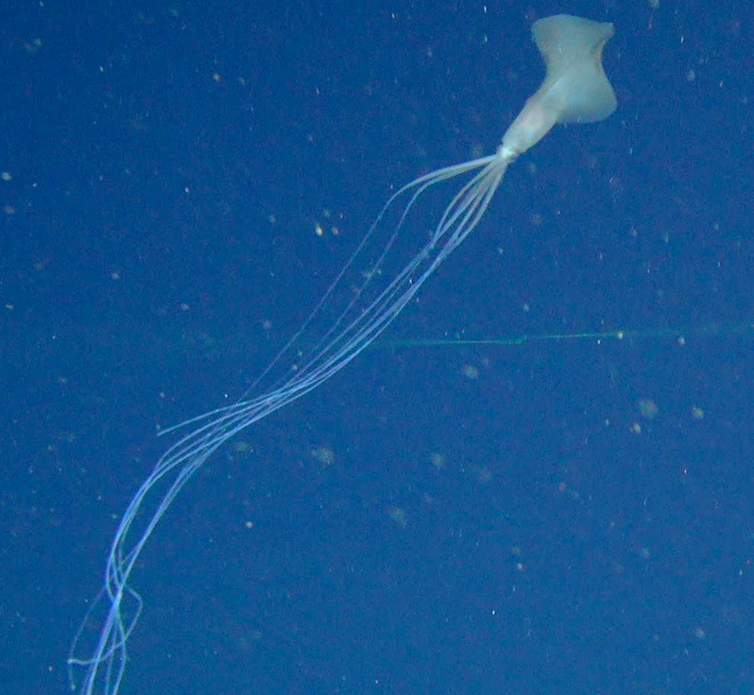
The mysterious bigfin squid has been spotted in Australia’s waters for the first time. My colleagues and I from the CSIRO and Museums Victoria detail the encounters in our new research, published today in Public Library of Sciences ONE.
There have only been about a dozen bigfin squid sightings worldwide over the past two decades. Ours happened more than two kilometres below the ocean’s surface in the Great Australian Bight, off the coast of South Australia.
For many people, the phrase “deep-sea squid” may conjure up images of the giant squid, Architeuthis dux, or krakens with huge tentacles swimming in inky black water.
But there are dozens, if not hundreds, of other species of deep-sea squid and octopus (both members of the class Cephalopoda) that are just as mysterious.
First Encounters With A Slippery Individual
For years, one of the only ways to sample the deep sea was to trawl the sea floor with nets. This often damaged the soft bodies of deep-sea organisms beyond recognition. These mangled specimens are then difficult to identify and reveal little to nothing about the creatures.
Fortunately, newer technologies such as remotely-operated vehicles (ROVs) equipped with high-definition cameras are letting scientists see species as they’ve never seen before — offering deeper insight into their shapes, colours and behaviours in the wild.
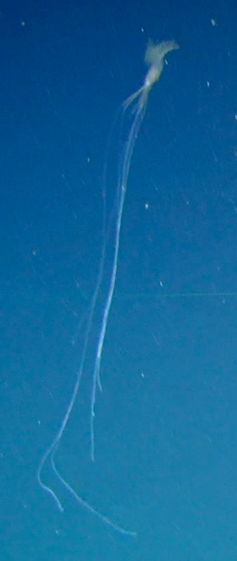
The enigmatic bigfin squid, Magnapinna, is one case in point. When scientists first described the species in 1998, all they had to go by were some damaged specimens from Hawaii.
The most distinctive feature of these specimens were the large fins (at the very top of the body), which gave the squid its name. Years later, scientists exploring the deep Gulf of Mexico with ROVs realised they had come across Magnapinna in the wild.
They discovered that in addition to its distinctive fins, its arms had incredibly long filaments on the tips, making the bigfin squid unlike any other encountered.
These delicate filaments, which are mostly broken off in collected specimens, give Magnapinna an estimated total length of up to seven meters!
Mysterious Critters And Where To Find Them
But despite deep-sea ROV surveys becoming more common, Magnapinna has remained elusive.
The handful of sightings have been as far apart as the Central Pacific, North and South Atlantic, Gulf of Mexico and Indian Ocean. This suggests a worldwide distribution.
Yet, the big fin squid had never been seen in Australian waters. That is, until recently, when our team took part in a major research project to better understand the biology and geology of the Great Australian Bight, through the Great Australian Bight Deepwater Marine Program.
On the CSIRO’s research vessel Investigator and charter vessel REM Etive, we surveyed as deep as five kilometres below the water’s surface. Using nets, ROVs and other camera equipment, we recorded hundreds of hours of video footage and uncovered thousands of species.
On one dive, as we watched the video feed from cameras far below us, a wispy shape emerged from the gloom. With large undulating fins, a small torpedo-shaped body and long stringy limbs, it was unmistakably Magnapinna. We yelled and brought the ROV to a halt to get a better look.
The meeting lasted about three minutes. During this time we managed to use parallel laser pointers to measure the squid’s length — about 1.8 meters — before it swam away into darkness.
Read more: Octopuses are super-smart ... but are they conscious?
In total, we recorded five encounters with Magnapinna in the Great Australian Bight. Based on the animals’ measurements, we believe we recorded five different individuals: the most Magnapinna ever filmed in one place.
Most previous records have been of single Magnapinna, but our five squid were all found clustered close to each other. This might mean they like the habitat where they were found, but we’ll need more sightings to be sure.
Unexplained Behaviours
The footage we captured has offered new information about Magnapinna’s ecology, behaviour and anatomy.
Previously, Magnapinna has been seen many meters off the sea floor in an upright posture, with arms held wide and filaments draping down. We’re not sure what the specific function of this behaviour is. It might be a way to find prey — akin to dangling sticky, sucker-covered fishing lines.
On our voyage, we saw the squid in a horizontal version of this pose, just centimetres off the sea floor, with its arms and filaments streaming behind. Again, we don’t know whether this behaviour is for travelling, avoiding predators or another method of searching for prey.
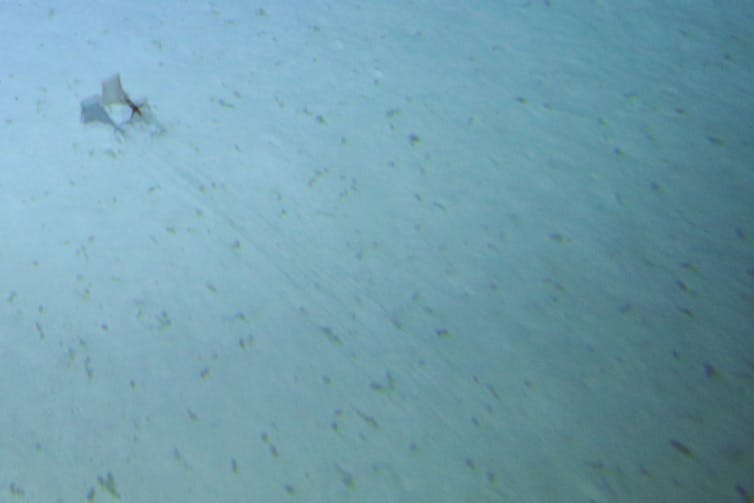
One near-miss with a camera gave us a very closeup image of Magnapinna which showed filaments that appeared to be coiled like springs. This may be a means for Magnapinna to retract its filaments when needed, perhaps if it wanted to avoid damage, or reel in something it caught.
Until now, only one other cephalopod, the vampire squid (Vampyroteuthis infernalis), has been known to coil its filamentous appendages this way.
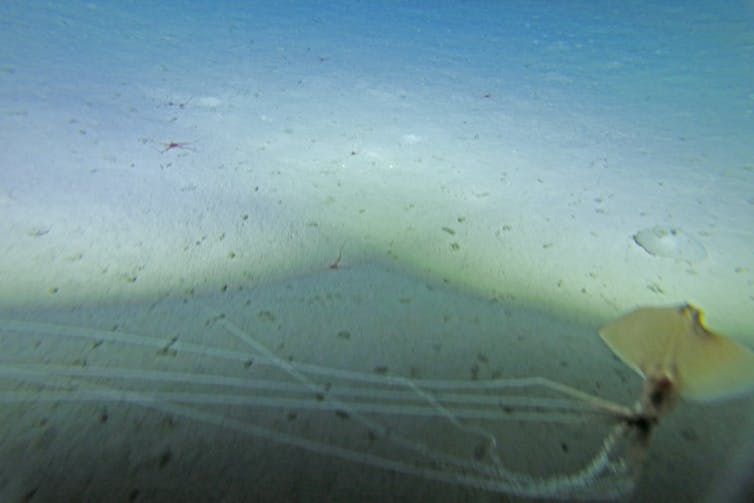
We have learned more about the mysterious bigfin squid. But until we have more sightings, or even an intact specimen, questions will remain.
One thing we do know is ROV surveying has great potential to enhance our understanding of deep-sea animals. With so much of the ocean around Australia yet to be explored, who knows what we’ll see coming out of the gloom next time?
Read more: Curious Kids: have people ever seen a colossal squid? ![]()
Hugh MacIntosh, Research Associate, Marine Invertebrates, Museums Victoria and Deborah Osterhage, Marine Scientist, Oceans and Atmosphere, CSIRO
This article is republished from The Conversation under a Creative Commons license. Read the original article.
Singing Together While Apart - Song Of Peace
Health Survey Sales Tricks Hurt Older Australians: CHOICE Shonkys 2020

- InvoCare Funerals – for failing to be upfront about prices
- Greentech air purifiers – for pathetic purification
- Harvey Norman – for a toxic partnership with Latitude Finance
- Floor cleaners – for being flawed cleaners
- Revitalife – for a sales scheme that needs to be put to bed
COVID-19 Support Line Extended And Expanded
- wellbeing checks
- information about COVID-19
- advice to vulnerable people
- travel restrictions
- access to new, or queries about existing, home care services.
Virtual Reality Technology To Improve Pedestrian Safety For Older Australians
Are You Eligible For The Budget Bonus Payments?
- $55,808 for singles
- $89,290 for couples
- $111,616 for couples who are separated by illness, respite care or prison.
AVPALS Term 4 2020


Better Targeted Rent Assistance Needed To Help Low-Income Tenants
Printable Ink Guides Cell Growth Offers Nerve Injury Hope
New 'Robotic Snake' Device Grips; Picks Up Objects
Fish Give Insight On Sound Sensitivity In Fragile X Syndrome
Concrete Architecture: Beauty Or Beast?
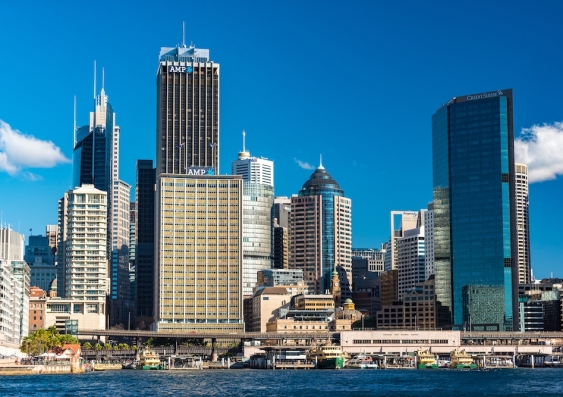
Disclaimer: These articles are not intended to provide medical advice, diagnosis or treatment. Views expressed here do not necessarily reflect those of Pittwater Online News or its staff.